The Star Trek Lit-verse Reading Guide
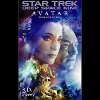
Since 1967, when the first Star Trek comic was published, 2,635 Star Trek stories have been released in print, comic, and original audio form. In the first decades, the majority of these were standalone stories that only referenced the show. However, over most of the past twenty years the majority of Simon and Schuster novels took place in a shared continuity in which the events of one novel often had major repercussions on the novels following it. This modern continuity will be referred to here as the STAR TREK LIT-VERSE.
Unlike the Star Wars Expanded Universe or various other media tie-in lines, no Star Trek novel, comic, or game is considered canon. Even those written in conjunction with the new, currently in-production series. However, that doesn't take anything away from the quality of the material or its ability to entertain. Even as Star Trek has returned to the small screen and the Simon and Schuster novel continuity has mostly drawn to a close, the inter-connectedness of the novels will likely continue in some form as it has for the majority of Trek history.
The complete Lit-verse consists of a continuity web of more than 1100 stories. That is approaching half of all Star Trek fiction ever published. In addition to the majority of the novels which have been released over the past two decades, many older novels have been referenced in this continuity as well. Available to the left are reading lists for each of the series. Don't be overwhelmed by the length of some of the lists. All anthology short stories and many comic issues are listed individually, so it's not as much reading as it seems to a newcomer. Not all connections are noted, only the ones which form the branching out of the lists. Author annotations can be found for many stories to provide more extensive references.
My placement of a story in the Lit-verse is not intended to imply that there are no continuity discrepancies included in the material. There are definite contradictions in the lists I've compiled. The fact is, not even the shows themselves are free of continuity errors, some quite large. The older novels do not always agree in every detail with the Lit-verse, or even with modern canon. Indeed, even the newer novels, written with the modern continuity in mind, sometimes contain a few mistakes. The majority of all this can be ignored, or explained away by a creative mind. My goal here was to include every link possible and leave the continuity problems up to the reader to resolve. If you don't want a book in your personal continuity, then just ignore it. Don't become so invested in continuity that you forget to enjoy the stories themselves.

A Note On the Format of This Website
Each Star Trek series is given its own reading list page. The major Lit-only series, New Frontier, SCE, Gorkon, Titan, Vanguard/Seekers, Mirror Universe , and Myriad Universes also have their own pages. The easiest way to include Stargazer, The Lost Era, and certain other like-period pieces was to create an Early 24th Century reading list containing them all.
I then have a simple list of Simon and Schuster stories that take place after Star Trek: Nemesis grouped into "chapters". A more detailed timeline of the stories following Star Trek: Nemesis is given on the Post-Nemesis: Month-By-Month page. Note that these stories were published in the years before Star Trek: Picard premiered, and the authors were given free rein to explore the late 24th century. Things do "eventually" lead back into the modern television continuity now shown in Star Trek: Picard and other series, but tell an alternate history of the intervening years that only makes sense in relation to the canonical storyline at its conclusion in the Coda trilogy.
Also to the left is a month-by-month breakdown of the Five Year Mission. The Complete Pocket Books Novel List updates the novel list as given in the back of Pocket Books novels in years past, before the list became so long that it was considered impractical to include in every book. I also have a list of all the ebook exclusive Trek stories which have been published and never been released in print. Then there's a vast examination of the minutiae of Klingon date keeping systems. I've keep an exact count of every Star Trek story ever published, updated with each new month's releases, and a count of just how many stories have been told that take place in the Five Year Mission. And for the first two seasons of Discovery, I kept an examination of the dating of each episode. Don't miss pictures of my 1:5000 scale Star Trek ship model collection, and a page where I log all the updates to the site, for those interested in seeing what is new and what has changed.
Forthcoming is the Complete Lit-verse reading list, which will include every story from the main reading lists in order. Also to come will be more specific reading lists (character specific lists, species specific lists, storyline specific lists). I also want to build a "Simple Pre-Nemesis Reading List." Someday I will develop an explanation of my own personal continuity and a list of what it includes.
Each anthology is broken up into individual short stories, and each novella and comic issue is included separately. Special cases were The Lives of Dax and No Limits. These were both broken up into their individual stories (which spread them out over different series) and also placed in their respective series as a whole (for those only reading that series.) For example the short story 'Q'uandary from New Frontier: No Limits is essentially a TNG story and is included in that reading list, but for those only reading New Frontier , the entire No Limits anthology is listed there as well. In addition to being broken up across series lines, each story from Tales of the Dominion War is also included on the DS9 page, because of the centrality of the overall story to that series.
New Frontier presented a specific challenge in that much back story had to be presented to get the series established, because of its Lit-only nature. Thus to experience many of its short stories in chronological order without breaking up some of the New Frontier flashbacks into separately listed sections would have been somewhat unintelligible to a new reader. This is not the case for the TV series based book lines, nor is it a circumstance shared by the other Lit-only series. So with New Frontier some of the flashbacks are presented as separate portions of the list. This is explained further on the New Frontier page.
With comic series, miniseries were treated as whole unique stories, but only individual linked issues of anthology or ongoing series were included. I didn't consider the "Previously in Star Trek--" intros in Marvel comics to rise to the level of a story reference. Where possible, I have condensed miniseries or story arcs into single entries to trim the length of the reading lists. Above all the proceeding considerations, however, my overriding rule was that if multiple stories were published in the same work, such as a short story anthology or multistory comic book, all stories between those two covers would be included if anything from that volume was connected to the Lit-verse.
The Strange New Worlds anthologies were forced to break this rule though. At least one story from almost all the volumes of SNW was referenced, and this would have necessitated putting almost every SNW story into the reading lists. Also specifically not included are references involving RPGs or video games.
The timeline used for these lists was derived from the Timeliners chronology in Voyages of the Imagination by Jeff Ayers and lots of research done on my own, with the Memory-Beta timeline being a very important resource. Much of my process of figuring out the timeline of the various series was recorded on the TrekBBS. Starting here , with more to come in the future.
Note of Inspiration and Thanks
Very special thanks goes to turtletrekker of the TrekBBS message boards. His work in compiling at least half of these continuity connections was both the inspiration of and basis for this website. This entire idea began from the dozens of message boards questions about what books had to be read before reading Keith R.A. DeCandido's Articles of the Federation. The specific thread that can be considered the grandfather of this website can be found here . Turtletrekker ran with this and compiled the vast Charting the Novel-verse project, the second version of which can be found here . My interest in the project began and was first manifested in a discussion here and continued here .
More thanks to all the TrekBBS members who contributed to these discussions. Thanks also to Steve Roby, whose amazing Complete Starfleet Library is a great resource. And on the other side of the literary coin is Mark Martinez's Star Trek Comics Checklist , which is invaluable to me, and Curt Danhouser's Guide to the Star Trek Story Records
None of this would be possible without the original Timeliners who created the Voyages of the Imagination timeline, and all of my colleagues who have kept it alive over the years. I thank them for their allowance to include small tidbits of information here and there. Keep in mind this is simply my interpretation of Star Trek continuity. Your mileage may vary. Enjoy, everyone!
Questions? Comments? [email protected] Twitter: @ryan1234560 Or vist the Trek BBS Thread
The Star Trek Litverse Reading Guide is not affiliated with CBS Studios Inc.. Star Trek ® is a trademark of CBS Studios Inc.
- Schedules and Guides
- 2020 Schedule
- 2021 Schedule
- Reading Order
- Starships Index
Trek-Lit Reading Order Flow Chart
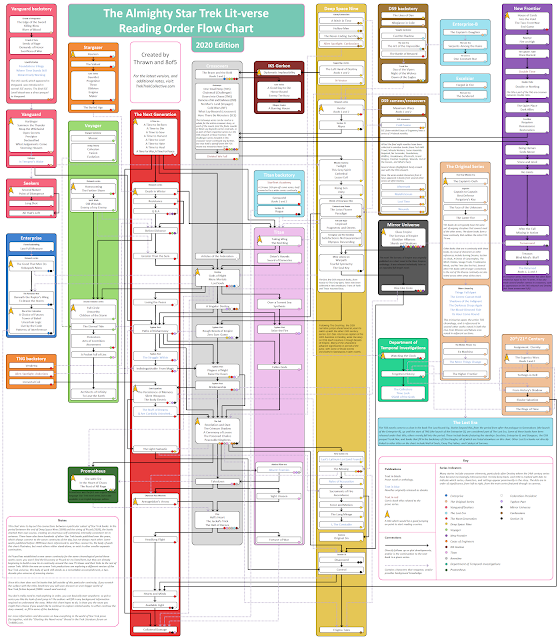
- Crossovers:
- To fully immerse yourself in the litverse, the big crossover event that really starting to bring things together was the Destiny trilogy - A great place to jump in, leading to stories from several series set after it. One step back from Destiny is Articles of the Federation , which is the perfect introduction to the world of Federation politics which becomes prominent in Destiny and beyond.
- If you're looking to jump in further along, then The Fall is a good place to start; the five-part crossover brings together most of the 24th century series, and shakes up the status quo for the series as they continue independently after.
- A cohesive series of Mirror Universe stories builds to a grand finale that has knock-on effects in the prime timeline narrative. These stories begin in the anthology Glass Empire .
- DS9 was the first series to enjoy a post-TV relaunch; the main new DS9 adventures start from Avatar , which is also available in Twist of Faith , an omnibus of the first four books of the series.
- The ongoing TNG narrative really starts from the A Time to… series, but you could jump on from the first book set after Nemesis , Death in Winter . Later on in the run, other good jumping on points are the Cold Equations trilogy, or Armageddon's Arrow , the first of a run of stories from the same mission for the Enterprise.
- Another branch of TNG , Titan , featuring Captain Riker's ship, gets going from Taking Wing , or you can explore Picard's backstory in the run of Stargazer novels which begins with Reunion .
- Voyager 's first post- Endgame stories start from Homecoming , but the series got something of a second start later with the return to the Delta Quadrant in Full Circle .
- Enterprise:
- Enterprise 's post finale adventures begin from The Good That Men Do . This series also has secondary relaunch with the post-Romulan War era in A Choice of Futures beginning the Rise of the Federation series.
- TOS doesn't have quite the same sort of ongoing narrative as the other series, but there are a few books that form a loose continuity, and The Captain's Oath is a good place to start with those.
- If you're looking for something more serialised in the 23rd century, then check out Vanguard , which starts from Harbinger , and spawned a spin-off series Seekers , beginning with Second Nature .
- A side-step from regular TOS adventures gives us a linked series of books featuring the Star Trek universe of the 20th and 21st centuries. A good place to start exploring these is the Eugenics Wars duology.
- Other spin-offs
- New Frontier was the first major spin-off Star Trek book series, featuring the adventures of Captain Calhoun and the USS Excalibur. The series begins with House of Cards , but the first four books were all short, and are also available as a single omnibus .
- IKS Gorkon , retitled in its final book as Klingon Empire , is a Klingon series, which got it's first moment's in the TNG novel Diplomatic Implausibility .
- Not listed in full on the chart is Corps of Engineers , also known as SCE , this extensive series of novellas features the engineering specialists of the USS da Vinci and crosses over into other series every so often. Their stories begin with The Belly of the Beast , or an omnibus of the first four books in the series, Have Tech, Will Travel .
- Department of Temporal Investigations features the time traveling hijinks, and frustrated bureaucracy, of the Federation's time police. Their adventures start (depending on how you perceive time) with Watching the Clock .
- Prometheus is a unique series, the first tie-in to be originally written in German, but also available in English. A trilogy of books featuring the distinctive ship begins with Fire with Fire .
59 comments:
Thanks for the hard work !!! i do really appreciate it. Do you have plans on updating from time to time ??? regards
It's on version 2 at the moment, I'll probably do an update once The Fall is done and we know what effect that has on everything :)
Thank you so much for updating this. It is possible to find the info yourself on Memory Alpha etc but this is a much easier way to do it and a good way too not scare off new readers with them having to do too much own research.
Where is Spock Must Die in this? Also, you have a typo in the title of "Greater Than the Sum." But... wow, just wow. What a map.
Important question: where does "Planet X", the TNG/X-Men crossover, fit in?
Thanks for the note dwasifer, fixed that error now :) Rev, Planet X doesn't really much connect to the wider continuity as far as I know (I've not read it), but I believe it's a direct sequel to the TNG/X-Men comic Second Contact, which itself takes place immediately after First Contact.
This is an amazing reference. Thanks very much for putting it together. I've been using it to organise my Trek Books and for reading the 20 or so trek books that I've recently bought in the right order.
hi fantastic flow chart! ...what program did you use to create the chart?
I love you for making this. The Pocket Books Novel-verse is starting to become like it's own Star-Wars-Expanded-Universe-esque canon storyline.
This is really awesome! I love Star Trek and after watching everything 1000 times over I need new content so I figured I would dive into the book series for the first time. But where to start? This really helps answer that question and gives me a good reference! Thanks!
First, I absolutely love this thing. I've been trying to get caught up on Trek lit for a while now and this has been VERY HELPFUL. A couple constructive comments: #1 There's a dashed green line going to Serpents Among the Ruins/The Art of the Impossible/Alien Spotlight: Cardassians/Cardassia and Andor that doesn't have a beginning. It's all end arrows, so it's unclear which direction this is supposed to go. #2 Q Are Cordially Invited. I haven't read it yet so I don't know exactly where it goes but I'm thinking it needs to be included.
Hi Benjamin, apologies for the very slow reply, I hadn't spotted your comment! As you might see, we've just posted an updated version of the chart, which might help with your questions, but to expand on them: #1 We removed the multi-directional Cardassian story arrow because ti was a bit confusing indeed, but the idea was to show how all the Cardassian/Garak stories are generally a bit interconnected. But we can sort of communicate that with the series dots not, so we didn't need the confusing arrows to everywhere! #2 Q Are Cordially Invited... tells the story of the Picard/Crusher wedding, which took place some time before Greater Than the Sum. But there is a framing story on an unspecified wedding anniversary. As we couldn't spot a reference to which anniversary we've opted to put it down in almost publication order, with the other TNG ebook, just before The Fall.
Sadly the site that opens once I click on the flow chart stays blank.
Working fine for me. Anyone else having problems?
Thanks for this graphic, it really helps me and will from now on be my guide :) Do you have plans on updating it with the new novels that have been and will be released?
Of course, this is already version four, which includes most of the books coming out this year (that have connections to the wider continuity) and a few even further ahead already. As more books come we'll update accordingly, and also refine the chart once we know more connections in forthcoming books :)
@8of5 That's amazing to hear! Thanks again for your work it really helps!
Thank you for creating this. Watched all the shows, just now getting into the books! This helps a bunch!
I have watched the show, its better if you had created this flowchart with standard flowchart symbols
This is top-notch. Printed it off and have it laminated already! Been able to track all my reading and discover what else to read in some logical order. As a result, just bought 13 new books. Hunting down the older ones are a bit tricky - been using Abe Books but this can be a wee expensive when you live in Australia. Booktopia's great for the more popular and/or newer books. Just wanted to say thank-you
That should be Book Depository. Booktopia a place a hardly buy books from - but I do from time to time. Needless to say, I've never bought any Star Trek from Booktopia. Have a great day :)
I come back to this flow chart every couple of months. Just to find out which book(s) to read next. Thanks for the good work!
The DS9 upcoming book "The Empty Sack" is now titled "Rules of Accusation" and will be out in July, 2016
Thanks for the update Terry!
Hi, Any update incoming?
Working on an update right now in fact, I expect it will be up next week some time (complete with the final title for Terry's book!).
Excited to see it. thanks.
Thank you Baby Jesus I found this
This list is awesome. Unfortuantely, now that the color palette is up to 19, my mild color-blindness is making matching some of these difficult if not a lost cause. Guessing the circles are too teeny to use iconography, so probably not much to be done for it. Still, a minor issue with an awesome chart.
I did revise the colours this time around to try and make them distinct as possible, as someone made a similar remark at the last revision. But yes you're right, due to the rather large number of colours to mark all the different dots, and the dots being too small to do much else it would take a completely different design approach to make it easier to read. It's something we're aware of, but haven't found a solution yet.
A great effort / work! Kudos to you brave souls! :)
Where does the Genesis Wave fit in?
Ty for your hard work
Thanks for your work, I'm following this since version 2 and it's an amazing help for me. This is why I love Star Trek - the fans! (also: great that you included Prometheus!)
Been meaning to catch up with you - thanks for this updated and shared resource. Top-notch! Kimberley.
This has been a great resource for catching up on all of the books/series. I did find one error, though. Somehow, you've omitted A Time to Kill from the TNG:A Time To... saga in version 5. Thanks again for the hard work and maintenance!
This flowchart is really awesome. And thanks for adding "Star Trek Prometheus" But I found an error, too. "Star Trek: Prometheus: Into the Heart of Chaos" is volume III not II. "The Source of All Fury" is II. And: The connection to "Takedown" is the wrong way round. STP take place just before "Takedown" and while it was written later it references events, that take place at the beginning of "Takedown". Bernd
This chart is great, but do you have a merged list of everything in a single chronological order?
This chart is great and all, but... where's Corps of Engineers? Because I don't see it on there.
Im thinking of reading Section 31 Control. Do I need to read Disavowed first?
Absolutely. I think ~most (all) would agree. They are both great reads.
If I remember right, way back last year I had the following experience. I had Disavowed as being the next read on DS9 having been through all the others. But I had to stop reading it after a while - I felt I was missing something. So, I went a few steps back and read The Fall series (esp. A Ceremony of Losses - I think), and then went through Vanguard, Lovell and Seekers (in that order) - I'm now on Seekers #2. It's been really interesting getting familiar with all the backdrop as well as having some great reads. Anyway, whatever you do have a great read. I'm sure you'll be able to get any background info to fill in any detail behind both Disavowed & Control from the Internet (Memory Alpha or Beta) - and thanks for reminding me to order my copy of Control!
Any updates inbound?
Yeah, this list is a bit out of date right now. I'm currently reading "Available Light." (The latest TNG book as of April 2019)
Please could this list be updated, I used to rely on this as which book to read and in what sequence but its now outdated.
Also really looking forward to an update :) would be really appreciated.
Also looking for an update, I use this to find out when new stuff is out, I didn't even know about Collateral Damage
I only just found out about Collateral Damage as well. This graphic is quickly falling behind! I hope it gets updated, it has been a valuable resource.
Kudos to the flow chart. That is awesome and exactly what I was looking for.
Everyone that's been asking for an update, please check the page now :)
Thank you very much for taking the time to update and expand it. Been using it since version 1. I almost read all novels that are one the chart and feeling both sadness that the litverse as we know it will come to an end. But I'm looking forward to what's to come and if there will be one last novel to bring the novelverse in line with Picard.
Great chart!! Thanks for the update. Loving your work. #LLAP
This is fantastic! Thanks for all of the work you did putting this together!
Just a quick nitpick, the "Created By" section in the 2020 version has a typo (I'm assuming). It says "For the latest version, and additional notes, visit: TrekTrekCollective.com" Looks like there's an extra "Trek" in the url. That said, I love the chart. Thank you!
Is a new version planned for rhe chart? One that goes up to the upcoming Coda trilogy?
There are a couple references to the Enterprise-E’s recent experience with the Genesis Wave in A Time to Sow.
Post a Comment
Star Trek post-Nemesis novel reading order - Shastrix Books
Star trek post-nemesis reading order.
The following is a recommendation of a reading order for the novels that are set in and/or interact with the post-Nemesis era of Star Trek. This includes the ongoing adventures in the Next Generation, Deep Space Nine, Voyager, and Enterprise lines, along with spin-off series Titan and adventures of the USS Aventine.
This is based roughly on the idea that you want to read adventures mostly in the order they are set, however in some instances the publication order is different and it makes sense to read them slightly out of 'chronological' order.
Feel free to leave feedback, comments, or discussion on my books forum .
- The Good That Men Do
- Kobayashi Maru
- Beneath the Raptor's Wing
- To Brave the Storm
- Death in Winter
- Taking Wing
- Before Dishonour
- The Red King
- Orion's Hounds
- Articles of the Federation
- Greater than the Sum
- Sword of Damocles
- Gods of Night
- Mere Mortals
- Watching the Clock
- Losing the Peace
- Over a Torrent Sea
- Full Circle
- Children of the Storm
- A Singular Destiny
- Zero Sum Game
- Seize the Fire
- Rough Beasts of Empire
- Paths of Disharmony
- Fallen Gods
- The Struggle Within
- Indistinguishable from Magic
- Forgotten History
- Plagues of Night
- Absent Enemies
- Raise the Dawn
- The Eternal Tide
- Brinkmanship
- The Persistence of Memory
- Silent Weapons
- The Body Electric
- The Stuff of Dreams
- A Choice of Futures
- A Ceremony of Losses
- The Crimson Shadow
- Revelation and Dust
- The Poisoned Chalice
- Peaceable Kingdoms
- Tower of Babel
- The Light Fantastic
- Love's Latinum Lost (and Found)
- Q Are Cordially Uninvited
- Acts of Contrition
- The Collectors
- The Missing
- Uncertain Logic
- Armageddon's Arrow
- Sacraments of Fire
- Sight Unseen
- A Pocket Full of Lies
- Live By The Code
- Force and Motion
- Rules of Accusation
- Hell's Heart
- The Jackal's Trick
- The Hall of Heroes
- Headlong Flight
- The Long Mirage
- Hearts and Minds
- Enigma Tales
- Original Sin
- I, The Constable
- Fortune of War
- Architects of Infinity
- Available Light
- Collateral Damage
- To Lose The Earth
- Moments Asunder
- The Ashes of Tomorrow

Order of Star Trek Books
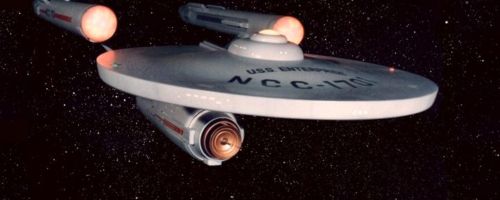
The first Star Trek novels were direct novelizations of the original Star Trek episodes by James Blish, running from 1967-1978. Along with the various Star Trek novel series there have also been dozens of authors who have contributed to the franchise, including (but not limited to) Roddenberry himself, G. Harry Stine (as Lee Correy), A.C. Crispin, Diane Duane, J.M. Dillard, Vonda N. McIntyre, Michael Jan Friedman, Peter David, Diane Carey, David R. George III, Greg Cox and many others.
Below we have listed the various series not directly linked to any of the major Star Trek novel series (read more about those by clicking the various links on this page) and any crossover series that spans multiple Star Trek series, sorted by year of publication:
Publication Order of Star Trek: TOS Adaptations Books
Get notified when Joe Haldeman releases a new book at BookNotification.com .
Publication Order of Star Trek Adventures Books
Get notified when Alan Dean Foster releases a new book at BookNotification.com .
Publication Order of Star Trek: The Animated Books
Publication order of star trek wanderer books.
Get notified when William Shatner releases a new book at BookNotification.com .
Publication Order of Star Trek: Odyssey Books
Publication order of star trek: the mirror universe trilogy books, publication order of star trek: totality books.
Get notified when Peter David releases a new book at BookNotification.com .
Publication Order of Star Trek: New Frontier Books
(by: peter david, josepha sherman).
Get notified when David Mack releases a new book at BookNotification.com .
Publication Order of Star Trek: Starfleet Corps Of Engineers Books
Get notified when Michael A. Martin releases a new book at BookNotification.com .
Publication Order of Star Trek: Enterprise: Romulan War Books
Get notified when Christopher L. Bennett releases a new book at BookNotification.com .
Publication Order of Star Trek: Enterprise: Rise Of The Federation Books
Get notified when Diane Carey releases a new book at BookNotification.com .
Publication Order of Star Trek: Enterprise Episode Novelizations Books
Get notified when Dean Wesley Smith releases a new book at BookNotification.com .
Publication Order of Star Trek: Enterprise Books
Get notified when Michael Jan Friedman releases a new book at BookNotification.com .
Publication Order of Star Trek: Stargazer Books
Get notified when Ilsa J. Bick releases a new book at BookNotification.com .
Publication Order of Star Trek: The Lost Era Books
Publication order of star trek: vanguard books, publication order of star trek: invasion books, publication order of star trek: day of honor books, publication order of star trek: typhon pact books.
Get notified when Dayton Ward releases a new book at BookNotification.com .
Publication Order of Star Trek: The Fall Books
Get notified when John Jackson Miller releases a new book at BookNotification.com .
Publication Order of Star Trek: Prey Books
Publication order of star trek: titan books, publication order of star trek: section 31 books, publication order of star trek: academy books, publication order of star trek: excelsior books.
Get notified when Keith R.A. DeCandido releases a new book at BookNotification.com .
Publication Order of Star Trek: Klingon Empire Books
Get notified when William Leisner releases a new book at BookNotification.com .
Publication Order of Star Trek: The Next: Generation Myriad Universes Books
Publication order of star trek: seekers books, publication order of star trek: discovery books.
Get notified when Kirsten Beyer releases a new book at BookNotification.com .
Publication Order of Star Trek: Picard: Countdown Graphic Novels
Get notified when James Swallow releases a new book at BookNotification.com .
Publication Order of Star Trek: Picard Books
If you like star trek books, you’ll love….
- Miles Vorkosigan
- Solar Queen
3 Responses to “Order of Star Trek Books”
I just discovered Star Trek books. I’m particularly interested in those written by Peter David. Does anyone know where I can get a list of his Star Trek books and should they be read in order?
Good evening, looking at your order for the Titan Series, it seems to be missing Absent Enemies published in 2014
Thanks. The whole section needs an update.
Leave a Reply
Important note:.
Clicking any links beside the book lists will lead you to Amazon for more details, check if it is available or to purchase the book. As an Amazon Associate I earn from qualifying purchases.
- Random Series
- Random Author
OOB Newsletter!
Popular authors.
- John Grisham
- Freida McFadden
- Meghan Quinn
- David Baldacci
- Jeffery Deaver
- Jeffrey Archer
- Louise Penny
- Steve Higgs
- Ken Follett
MISSING A BOOK OR AUTHOR?
Book/Author To Add:
April Charities
While I appreciate all offers of donations to show your appreciation for the site, I’d much rather you do that by supporting causes that need the money far more than I do. Each month I pick a few select charities broken down by our most popular countries that you can support instead. Thanks!
Your local humane society Ronald McDonald House Camfed The Life You Can Save
Other Categories
- Newsletter Archives
- OrderOfBooks on Facebook
- @OrderofBooks on Twitter
- Friends: BookSeriesInOrder.com
© 2024
- by Publisher
- 2017 Reviews
- 2016 Reviews
- 2015 Reviews
- 2014 Reviews
- 2013 Reviews
- Author Interviews
- Review Policy
- Search Reviews
Star Trek Novel Reading Order
Star Trek is one of the largest media tie-ins around, next to Star Wars novelizations. Although released in multiple series such as The Original Series, The Next Generation, Section 13, etc you can read these books as one large, interconnected story line. This is a reading order for all of the published Star Trek novels done more or less chronologically (there are several time travel novels where it is set in multiple time frames, in those cases it is placed chronologically where the majority of the issue takes place).
***Update****
I’ve reworked this order. Reading it through, it wasn’t quite right, and really to be enjoyed it should be done with all the media (shows, comics, books, etc). I’ve made a working order that you can not only follow, but create an account and track your reading & viewing. It’s still a work in progress, so if an era you are looking for you don’t see, just be patient. I am adding dozens of listings a day.
http://startrekreadingorder.com/
If you still only want the books, there is a listing of just books (still in progress also) here: http://startrekreadingorder.com/novel_reading_order.php

Newsletter Signup
Recent reviews.

Books by Travis Starnes

- | Book Release Calendar
- Contemporary Romance
- Historical Romance
- Paranormal Romance
- Romantic Suspense
Mystery/Thriller
- Cozy Mystery
- Police Procedural
- Historical Mystery
- Political Thriller
- Legal Thriller
- Psychological Suspense
Speculative
- Science Fiction
- Space Opera
- Epic Fantasy
- Urban Fantasy
Younger Readers
- Young Adult
- Kids: Middle Grade
- Kids: Chapter Books
- Kids: Beginning Readers
- Kids: Picture Books
- Welcome to FictionDB, Guest
- | My Account Sign In Register

Star Trek — Multiple Authors
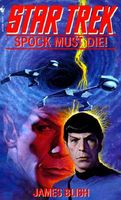
# of Books:
Latest book:, series rating:.
- Date (oldest)
- Date (newest)
The Star Trek Series in Order (903 Books)

- View history
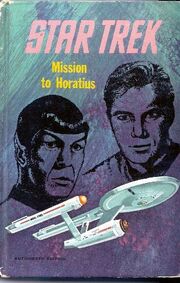
Mission to Horatius , the first Trek novel
Through a licensing process similar to those granted to create collectibles , comics , and games , Paramount Pictures has granted the rights to market Star Trek stories and books of various sorts through a number of different publishers, beginning in 1967 with a series based on Star Trek: The Original Series .
With the success of the Star Trek films and Star Trek: The Next Generation , a licensing office associated with the productions took stricter control of the franchise's image. Although writers of Star Trek publications were unlimited by TV budget and studio set constraints, they were discouraged from creating depictions that varied from the style and details of the franchise, as seen in filmed productions. Previous novels of the 1960s, 70s, and early 80s tend to vary from canon more than later series. Since most novels are produced by editors and writers not affiliated with franchise production staff , filmed productions generally regard the events and situations in most novelizations as completely apocryphal.
It should be noted that certain publications written by creators of Star Trek 's various series are sometimes referenced in later episodes of those series. Somewhat paradoxically, the novels themselves remain apocryphal in such cases while whatever information was mentioned on-screen becomes canon .
See also : Undeveloped Star Trek publications
- 1 Star Trek television tie-in series
- 2 Original ongoing series
- 3 Crossover series and anthologies
- 4 Other adventures
- 5 Young adult series
- 6 Omnibus collections
- 7 Reference works
- 8 External links
Star Trek television tie-in series [ ]
- Star Trek books and novelizations by Bantam Books
- Star Trek books and supplements by Ballantine/Random House
- Mission to Horatius (later reprinted by Pocket Books )
- Original Series novels and books
- Next Generation novels and books
- Deep Space Nine novels and books
- Voyager novels and books
- Enterprise novels and books
- Discovery novels and books
- Picard novels and books
- Prodigy novels and books
- Star Trek Which Way Books
- The Monsters of Star Trek
- Strange & Amazing Facts About Star Trek
Original ongoing series [ ]
- Star Trek: New Frontier
- Star Trek: Starfleet Corps of Engineers
- Star Trek: Stargazer
- Star Trek: Klingon Empire (Previously Star Trek: IKS Gorkon )
- Star Trek: Titan
- Star Trek: Vanguard
- Star Trek: Seekers
- Star Trek: Prometheus (in German)
Crossover series and anthologies [ ]
- Star Trek: Invasion!
- Star Trek: Day of Honor
- Tales from the Captain's Table
- Star Trek: Strange New Worlds
- Tales of the Dominion War
- Star Trek: The Next Generation - Double Helix
- Star Trek: The Badlands
- Star Trek: Enterprise Logs
- Star Trek: Dark Passions
- Star Trek: Section 31
- Star Trek: Gateways
- Star Trek: The Amazing Stories
- Star Trek: The Brave and the Bold
- Star Trek: The Lost Era
- Star Trek: Mirror Universe
- Star Trek: Myriad Universes
- Star Trek: Destiny
- Star Trek: Seven Deadly Sins
- Star Trek: Typhon Pact
- Star Trek: Department of Temporal Investigations
- Star Trek: The Fall
- Star Trek: Coda
Other adventures [ ]
- Legends of the Ferengi ( DS9 )
- Captain Proton: Defender of the Earth ( VOY )
- New Worlds, New Civilizations
- The Klingon Hamlet
- Articles of the Federation
- The Needs of the Many
Young adult series [ ]
- Star Trek: The Original Series - Starfleet Academy
- Star Trek: The Next Generation - Starfleet Academy
- Star Trek: Deep Space Nine Young Adult
- Star Trek: Voyager - Starfleet Academy
- Star Trek: Starfleet Academy
Omnibus collections [ ]
- Star Trek: Odyssey
- Star Trek: The Captain's Table
- Star Trek: Deep Space Nine - Millennium
- Starfleet: Year One
- Star Trek: Double Helix
- The Q Continuum
- Worlds in Collision
- Imzadi Forever
- Duty, Honor, Redemption
- The Hand of Kahless
- Sand and Stars
- Star Trek: Deep Space Nine - Twist of Faith
- Star Trek: Deep Space Nine - These Haunted Seas
Reference works [ ]
- Adventures in Time and Space
- Voyages of Imagination

External links [ ]
- Novels at Memory Beta , the wiki for licensed Star Trek works
- Star Trek Book Guide - database of book releases
- Psi Phi Book Database - full book list and details on recent and forthcoming releases.
- Star Trek Books Board
- 3 ISS Enterprise (NCC-1701)
Star Trek Timeline
A holistic view of the chronological timeline of events in the Star Trek universe(s).
This is a work in progress. Content is being added and refined. More features coming as well. (filtering, sorting, etc.) Content last updated on
Have a suggestion, addition, or correction? Send an email!
By Significance
- The Original Series
- The Animated Series
- The Next Generation
- Deep Space Nine
- Short Treks
- Lower Decks
- Strange New Worlds
This is a fan-created site dedicated to providing a holistic view of the chronological timeline of events in the Star Trek universe(s). Most material is sourced from the Memory Alpha fandom wiki site .
TrekTimeline.com is not endorsed, sponsored, or affiliated with CBS Studios Inc. or the "Star Trek" franchise. The Star Trek trademarks, logos, and related names are owned by CBS Studios Inc., and are used under "fair use" guidelines. The content of this site is released under the Creative Commons "Attribution-NonCommercial" license version 4.0.
Event Summary
The STAR TREK Annotated Timeline
By win scott eckert, the star trek annotated timeline was updated on september 12, 2003 . check back soon for further updates., now available: rare star trek newspaper comic strips from the uk click here for information, the star trek annotated timeline began in the late 1970s as an effort to place the original star trek novels published by bantam books, and the star trek log books by alan dean foster, into a logical chronology with the televised episodes of the original series. bjo trimble's star trek concordance was heavily used as a reference in back in those days, in which this timeline was a hand-written work. throughout the years, i have continued to follow all forms of star trek literature, in addition to the various television series and films., when actual calendar dates were finally used in the star trek: the next generation episode the neutral zone , i was surprised to find that the dates in my own timeline actually worked. that episode takes place in the year 2364. moving backward somewhat less than a year, the premiere episode encounter at farpoint can be placed in late 2363. in that episode, admiral mccoy is said to be 137 years old. thus, mccoy was born in about 2226. if mccoy were in his 40s at the time of the original series, then the original series would take place in the mid-to-late 2260s. from this single point, the remainder of the dates in this timeline are derived, although, since then, many other calendar dates have been provided in the various series and stories., since the star trek chronology by michael and denise okuda published by pocket books follows this same logic, this timeline can be viewed as a supplement to theirs. all attempts have been made to follow that work, while at the same time including material that was excluded from that work. however, in a work of this scope, there are bound to be some differences in interpretation. see below for a few ways in which this timeline may differ from the okuda chronology ., this timeline may be seen as a comprehensive guide to all star trek fiction that has been authorized and licensed by paramount, including, but not limited to, novels, comics and short stories. there are a few exceptions.
The short story ‘‘Visit to a Weird Planet Revisited,’’ published in Star Trek: The New Voyages (volume 1). ‘‘Visit to a Weird Planet Revisited,’’ wherein Kirk, Spock and McCoy trade places with Shatner, Nimoy and Kelley, is more fanciful pastiche than true Star Trek fiction, and thus is not included in this Timeline. "The Man Who Sold the Sky," from Strange New Worlds (volume 1) features Star Trek characters in a deathbed tribute to Gene Roddenberry, and is also excluded. “JubHa’” ( Strange New Worlds , volume 3) is excluded because I don’t read Klingon. The Captain Proton stories (“Captain Proton and the Orb of Bajor,” Strange New Worlds volume 4; “The Adventures of Captain Proton, Chapter 1: The Space Vortex of Doom,” Star Trek: The Amazing Stories ; and Captain Proton: Defender of the Earth ) are excluded as not in Star Trek continuity. Fan fiction that has been published or otherwise disseminated by non-licensees, i.e. fiction published in ‘‘fanzines,’’ is not included in this Timeline.
Events are placed in this chronology using the following information: production order and season of televised episodes; references to past events and the number of years since said past events occurred; time periods described; style of uniform and equipment in use; age, rank and position of characters; and specific calendar dates given. Stardates are generally a secondary source and need not be determinative.
Information taken from televised episodes and movies takes precedence over contradictory information in novels, short stories, comics, etc., although every effort is made to reconcile the two through hypotheses and suppositions. this rule is broken in two places:.
(1) In the “Log’’ written adaptations of the animated Star Trek episodes: the stardates given in the episodes would intersperse the episodes throughout the episodes of the original three-year series; however, the “Log” books are written in such a way that each episode immediately follows the last. The “Log” books are highly regarded and I have chosen to follow their interpretation. Therefore I have placed all the animated episodes after the episodes comprising the three seasons of the original Star Trek series. (2) Many times in the early Star Trek novels, there are references to past events of the television series which have the effect of rearranging the order of the original series episodes as given in the Okuda Chronology . I have chosen to follow the novels in these instances, as I feel that the effect of rearranging the order of some of the original series episodes is relatively harmless.
Stardates for Classic Star Trek episodes are generally ignored, as they do not assist in determining the order of events during this period, and more often than not lead to contradictions with documented sequences of occurrences.
Example 1: The animated episode THE MAGICKS OF MEGAS-TU has a stardate of 1254.4, while the second pilot, WHERE NO MAN HAS GONE BEFORE , is stardated 1312.4. However, WHERE NO MAN HAS GONE BEFORE (older uniforms and equipment) obviously takes place before THE MAGICKS OF MEGAS-TU (updated uniforms and equipment).
Example 2: The stardate for PATTERNS OF FORCE (2534.0) would place it at the beginning of the first season. However, Ensign Chekov is in this episode, and he did not join the bridge crew until approximately the end of the first season or the beginning of the second season. Therefore, the stardate given is not useful in placing the episode.
Stardates for Star Trek: The Next Generation , Star Trek: Deep Space Nine and Star Trek: Voyager are more consistent (except for the first season of Star Trek: The Next Generation , where the stardates are very inconsistent and must be ignored); they are supplied in instances where they are useful in placing novels and comics, and where they help to provide a chronology of alternating episodes of two or more concurrent series. In instances where stardates are inconsistent, they are ignored for purposes of placing events in this chronology.
Example 1: Lt. Tasha Yar is killed in SKIN OF EVIL (stardate 41601.3). However, she is alive in THE ARSENAL OF FREEDOM (stardate 41798.2) and THE BIG GOODBYE (stardate 41997.7). Since THE ARSENAL OF FREEDOM and THE BIG GOODBYE must take place before SKIN OF EVIL , the stardates must be ignored. Example 2: In the novel Exiles (stardate 44429.1), Wesley is still on board the ship. However, Wesley leaves the ship in FINAL MISSION (stardate 44307.3). Since televised episodes take precedence over novels, the stardate in Exiles is incorrect and must be ignored; Exiles gets placed before FINAL MISSION .
This author makes no assertions as to whether or not certain episodes included in this Timeline are part of the “real” Star Trek canon. For example, most Star Trek fans do not recognize the Gold Key comics as valid Star Trek adventures. However, they are included here for the sake of a complete Timeline. Each individual Star Trek fan has his or her own ideas about which novels, comics, etc., are “true” Star Trek ; if a fan does want to include the Gold Key comics in his or her own personal canon, then this Timeline tells that fan when those adventures occurred. If a particular story does not meet your own personal standards for inclusion in the Star Trek canon, then feel free to ignore it in this Timeline.
While solutions are offered to many contradictions in the various star trek stories, some are beyond the scope of even this timeline. for instance, the astute reader will notice that the original u.s.s. enterprise and enterprise -a, under the command of captain kirk, have traveled to the galactic core several times. the original enterprise is also capable of traveling 1,000 light years in a period of a few days ( that which survives ). i'm sure that, 100 years later, captain janeway would have been quite interested in the secrets behind these miraculous feats of warp engineering., following are some reading tips:.
[ ] = alternate title used by James Blish in his short story episode adaptations ( ) = parenthetical comment or reference source < > = time travel date information in italics is solely this author's creative speculation made in order to resolve conflicting information and to fill in gaps commas in code citations indicate the same story being told in multiple media forms (for example, a movie and its novelization and its comic adaptation) a slash (“/”) in a code citation indicates the story takes place in two versions of Star Trek (for example, the novel Federation is a combination Classic Star Trek and Star Trek: The Next Generation novel and is cited “N/N(NG)”) roman numerals in parentheses distinguish different, unrelated episodes, novels or stories with identical titles all story titles are underlined all titles of T.V. episodes and movies are UNDERLINED, BOLDED AND IN ALL-CAPS
Finally, a caveat: reader beware. The Timeline contains a large amount of reference information; if the reader has not seen an episode or read a novel, the reader may want to skip the parenthetical information following the placement of that particular adventure, so as to avoid the spoilers.
Update information:, the timeline was updated on september 12, 2003., due to the high volume of star trek episodes, novels, and comics which are produced on an annual basis, updates to this timeline may take a while., the timeline is current through:, season 2 of the enterprise television series, strange new worlds iv anthology, starfleet corps of engineers number 16, ongoing series of novels: star trek: deep space nine - the left hand of destiny, books 1 and 2, star trek: voyager - homecoming and star trek: voyager - the farther shore (does not include do comets dream, stargazer: three, and the lost era: the sundered , and later novels), i also fully understand that the enterprise series is bound to contradict some of the pre-23rd century information provided in this timeline. information which conflicts with novels will be addressed in future revisions, as needed. , rich handley has kindly pointed out that the timeline does not include the star trek newspaper comic strips, from both the u.s. and the u.k. i am pleased to announce that the uk material is now available rich has spent 10 painstaking years compiling the entire run of british star trek strips, and the samples look extraordinary. click here for information on how to order the strips from rich, the timeline is available in pdf format. to download the timeline, right-click on the hyperlink and select "save target as..." due to its length, it may take a while to download (perhaps 6 or more minutes on a dial-up connection); please be patient., download the star trek timeline, links to other star trek chronologies which go beyond the televised episodes and films to cover some of the licensed star trek fiction:, chronology of written star trek fiction by geoff trowbridge , voyager timeline a timeline for episodes and books in seasons 1,2 and 3 by the lynx empire; future updates to this timeline will incorporate this research as appropriate, star trek chronology by edgar governo, early star trek novels by curt danhauser, star trek: new frontier by curt danhauser, other star trek links:, the wold newton universe and star trek : this page, one of many at the expansion of philip josé farmer's wold newton universe site, details what star trek has in common with many other fictional universes and characters., startrek.com : the official star trek website, the kes photo gallery presented by the lynx empire, trek today , the trek bbs , trek nation, star trek book database at psi phi, star trek : the books at simonsays.com, back to chronology central, back to the wold newton universe and star trek, site navigation, this site was created for the sole purposes of entertainment and information. all rights reserved. the text and design of the star trek annotated timeline is © 2001-2004 by the author, win eckert , except as otherwise specified. no copying or reproduction of this work or any portions thereof in any form whatsoever is permitted without prior written permission and consent of the author. star trek (tm)® is a registered trademark of paramount pictures..

Star Trek: Voyager Books In Order
Publication order of star trek: invasion books, publication order of star trek: day of honor books, publication order of star trek: the captain's table books, publication order of star trek: voyager: dark matters books, publication order of star trek: section 31 books, publication order of star trek: gateways books, publication order of star trek: voyager: spirit walk books, publication order of star trek: voyager: starfleet academy books, publication order of star trek: voyager: homecoming books, publication order of star trek: voyager books.
The Star Trek: Voyager is a science fiction book that was done by Gene Roddenberry in 1995. Gene Roddenberry was born on 19th August 1921 in El Paso, Texas, United States and passed away on 24th October 1991 in Santa Monica, California United States when he 70 years of age. He got married to Eileen Anita Rexroat on 20th June 1942. This was her first wife whom they had two children with. They divorced on 27th December 1969 and two days later, that is on 29th December 1969 he got married to her second wife who was known as Majel Barrett. They got one child and finally death separated the two when Gene Roddenberry passed away on 24th October 1991. Most of his books reflects his social views. He was nicknamed “The Great Bird of the Galaxy” while his birth name was Eugene Wesley Roddenberry. In his writing career he wrote several books like the series named “Star Trek: Voyager” that has now been one of the best series watched world-wide. This is his first novel that has appeared in the TV Shows and more parts have been created even after his death. This is one smart science fiction series that you will really love watching. You can always find it online for the whole story. Besides this, he also wrote other fiction books like the Next Generation and the Deep Space Nine that were written in 1987 and 1993 respectively.
The Star Trek: Voyager is a television series that was created by Rick Berman, Jeri Taylor and Michael Piller. The series has seven episodes that runs from 1995 to 2001. In the first series of the book, we find a female character who is also the captain named Kathryn Janeway. It is played by Kate Mulgrew who is the main character. The Star Trek: Voyager is the longest running series that you don’t want to miss watching. The first two books in the series are known as “Caretaker” and “Mosaic” which were published in 1995 and 1996 respectively.
This is the genesis novel of the series that was published on 1st May 1997. The main character of the book is known as Janeway who is also the captain. She is very brave, triumph, tragedy and loyal as described by Mosaic. In the book, we find Janeway fighting a very tough and desperate war on two fronts. This is just after a surprise attack by the Kozan that is a group that would like the overthrow the caretaker. While Janeway is trying to win the war, the Lt. Tuvok’s away team is trapped on Ofa wilderness planet. This is just but a small summary of this book. By reading or watching the series, you will always be inspired by Janeway because she is a very brave and courageous captain that really deserves to lead the people. Get this smart book today and you will enjoy reading. This is the best fiction book that you don’t want miss reading.
This is the second book of the series. It was published in 1995 and the books is all about the voyager crew and Maquis who had the plan to of dealing with the caretaker despite his great power. The caretaker therefore wants to send them home by transporting them 70,000 light years over the galaxy. On the other hand, we find Kazon that is the Alien group of warriors. They are really working to overthrow the caretaker so that they can find the chance to become the most powerful force in the region. The main character in this book is female captain Janeway. She has a mission to fulfil and this is the reason why she has been sent to carry out the investigation. She wants to find what exactly happened to the small ship known as the Maquis in which the security Liutenant Tuvok chief was infiltrated. In the process of investigation, the crew first point of landing was the Bad Lands. This is after tracking the last location of the engine emissions. The space is very unpredictable and turbulent as described by the crews. The voyager is suddenly pulled about 75,000 light years just from home on the opposite side of the galaxy. This occurs in the process of still trying to track the maquis ship. Due to the risky conditions, we find that most of the crews are seriously injured while others are killed during this this small trip. Among the killed officers are the voyagers’ nurse, chief engineering and first officer doctor. After this incident, the caretaker is somehow convinced by the strike of both maquis and Janeway to return them to the territory federation. Despite this threat, he finds it impossible because he wants to protect the people of Ocampa that is a nearby planet. Time then comes when the caretaker is almost dying, hence he doesn’t have any time for Janeway. Instead of aiding her, he request her to destroy the array once he is dead. The caretaker wants the array destroyed because he fears that the Kazon may use it against the people of Ocampa. The problem now remains on Janeway because she has a decision to make in life. By destroying this array implies that she, the crew plus the ship and her won’t be able to get home but instead takes another 70 years to reach. On the other hand, if she doesn’t destroy the array, then it implies that the helpless people of Ocampa will all die. She therefore has to make the best decision of either saving the people of Ocampa or saving her life plus her crew and ship. To get more about the book, then you should watch the fiction series movie and you will love the whole story. This is just but a small summary of this science fiction book. You can visit your nearby library or find the book online and find what decision Janeway made.
These are the first two books of the series that will give you the overview of the happenings in the series. The series has seven episodes that you can always follow. You can download the series or buy it online for a great watch. This is are some of the best works that were done by Gene Roddenberry.
Leave a Reply
The links beside each book title will take you to Amazon where you can read more about the book, check availability, or purchase it. As an Amazon Associate, I earn money from qualifying purchases. If you would like to link to us, Get the Code Here .

I often get asked by readers if they can donate to the site as a thank you for all the hard work. While I appreciate the offer – please support one of these great causes instead (list rotates monthly): Your local humane society Ronald McDonald House Camfed The Life You Can Save
Are you a fan of psychological thrillers? A big fan of authors such as Gillian Flynn? These are our most recommended authors in the thriller genre, which is my personal favourite genre:
- Freida McFadden
- Linwood Barclay
- Megan Goldin
- Peter Swanson
- Sarah Aldersom
- Shari Lapena
- Jack Reacher
- Court Gentry / Gray Man
I just want to thank everyone for visiting the site. Any issues at all don’t hesitate to use the contact form. To read more about the site or if you want a graphic to link to us, see the about page for more details.
Memory Beta, non-canon Star Trek Wiki
A friendly reminder regarding spoilers ! At present the expanded Trek universe is in a period of major upheaval with the continuations of Discovery and Prodigy , the advent of new eras in gaming with the Star Trek Adventures RPG , Star Trek: Infinite and Star Trek Online , as well as other post-57th Anniversary publications such as the ongoing IDW Star Trek comic and spin-off Star Trek: Defiant . Therefore, please be courteous to other users who may not be aware of current developments by using the {{ spoiler }}, {{ spoilers }} OR {{ majorspoiler }} tags when adding new information from sources less than six months old (even if it is minor info). Also, please do not include details in the summary bar when editing pages and do not anticipate making additions relating to sources not yet in release. THANK YOU
The Star Trek Fiction Timeline
- View history
The most recent timeline appears in Voyages of Imagination .
Pocket Books published a timeline of their books in Adventures in Time and Space . It was revised and added to Gateways : What Lay Beyond and again in Voyages of Imagination , aka "The Star Trek Fiction Companion".
This most current version contains a complete timeline to the " Pocket Books Star Trek novels , short stories , eBooks , novelizations , Simon & Schuster Audio original audio books, Minstrel Books young adult books , and classic novels from Bantam and Ballantine Books , published through October 2006 ." In addition, it contains the WildStorm comics and graphic novels as well as all of the episodes and movies from each of the television series.
The Timeliners [ ]
The most recent version of the Timeline was released with the following credits:
Created by David Bowling , Johan Ciamaglia , Ryan J. Cornelius , James R. McCain , Alex Rosenzweig , Paul T. Semones , and Coery W. Tacker
Third revision compiled in collaboration with Jason Barney , David Henderson , Lee Jamilkowski , and Geoff Trowbridge
With special thanks to Keith R.A. DeCandido , James E. Goeders , Robert Greenberger , Bob Manojlovich , John J. Ordover , Bill Williams and David Young .
Appendices [ ]
- 1 ISS Enterprise (NCC-1701)
- 3 Odyssey class
- More to Explore
- Series & Movies
Published Apr 24, 2024
Stuck in a Loop: The Best of Star Trek's Time-Jumping Episodes
From The Next Generation to Discovery, going around and around is sometimes very revealing.

StarTrek.com
In the Star Trek: Discovery Season 5 episode, " Face the Strange ," Captain Burnham and Commander Rayner find themselves both stuck in a loop, but also, jumping all around the timeline of the titular starship. From the point before the U.S.S. Discovery was launched, to pivotal moments in Season 4, Season 3, Season 2 and even very early in Season 1, Rayner notes at one point that, "We’ve gone back in time to when you went forward to the future. That’s a little confusing."
Throughout all of Star Trek 's history, time travel has been just as propulsive to the narratives as space travel. But, within the various time travel stories of Trek , there is a special kind of time-skipping episode — the time loop story. Discovery has recently shaken-up this formula with "Face the Strange," but many elements of this episode pay homage to a proud Star Trek tradition. Here’s the history of the best time loop, and time-jumping episodes across the entire Final Frontier.
" Cause and Effect ," Star Trek: The Next Generation (Season 5, Episode 18)
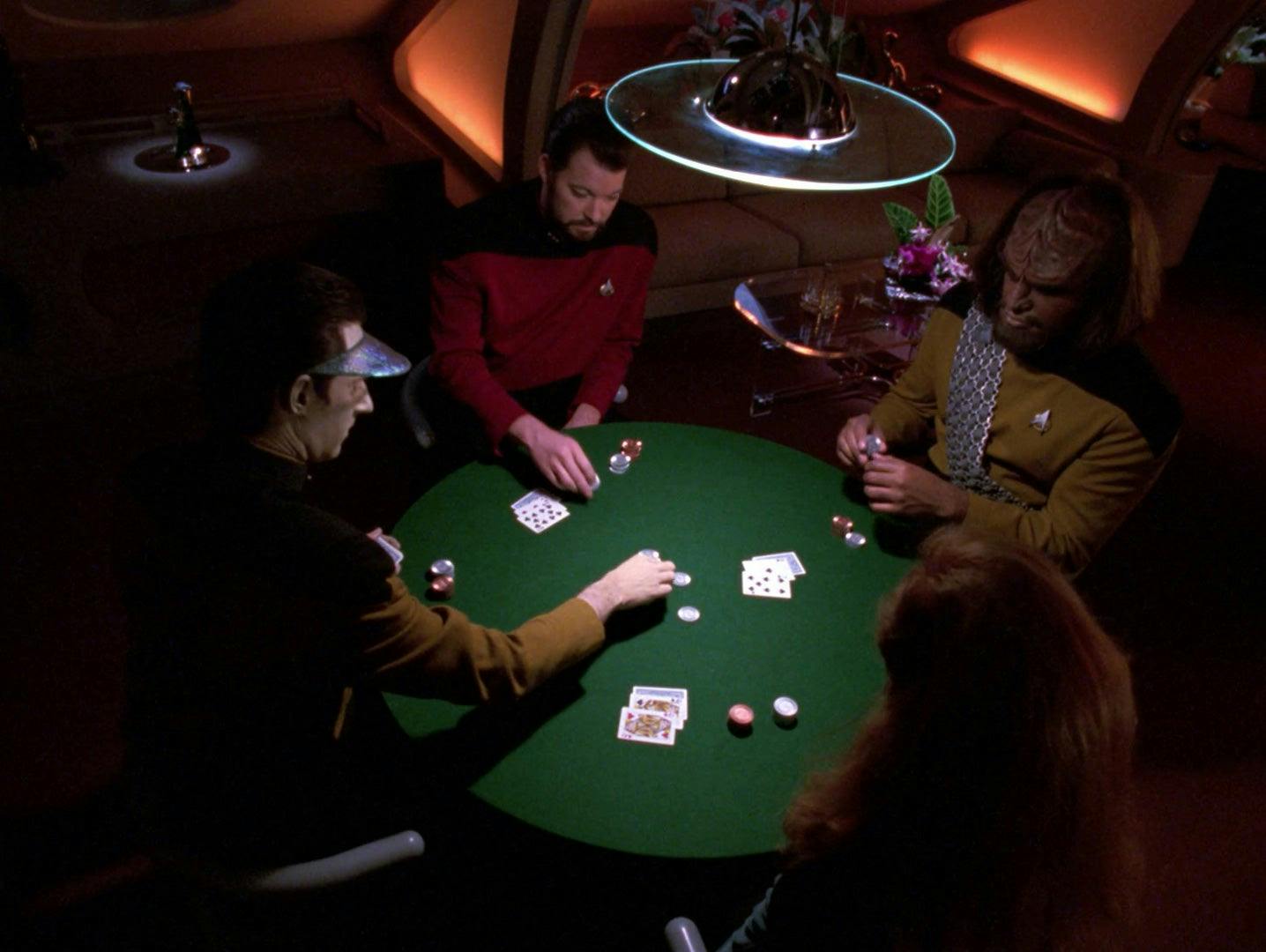
"Cause and Effect"
Perhaps one of the greatest science fiction episodes of all time, The Next Generation set the gold-standard for how to do time loop episodes.
When the Enterprise collides with another starship in the first scene, this episode poses one question right off the bat: What happens after you blow up the ship — and everyone on it — before the credits roll? The answer is mostly connected to whether or not we can even remember when we're stuck in a loop. Without actually spoiling this classic episode, let's just say thank the stars for Dr. Crusher and Data.
The brilliance of "Cause and Effect" cannot be overstated, but the 21st Century legacy of this episode is utterly appropriate. When Geordi reveals how the time loop works, Riker says, "You mean we could have come into this room, sat at this table and had this conversation a dozen times already?" This scene has become a popular meme format across various social media platforms, satirizing the time loop of some aspects of the internet experience.
" Parallels ," Star Trek: The Next Generation (Season 7, Episode 11)
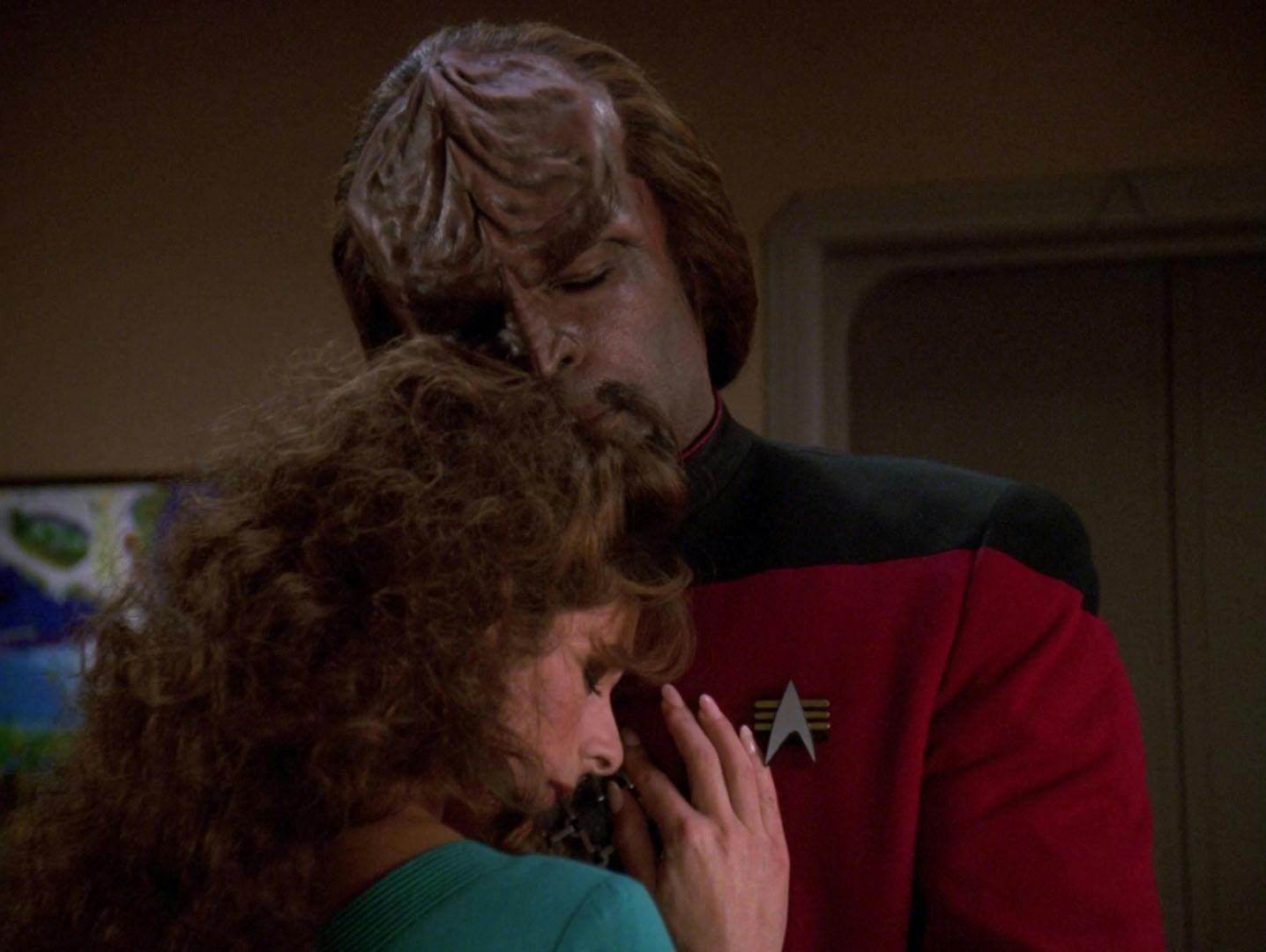
"Parallels"
Arguably, when Worf starts slipping between realities in "Parallels," the story is more focused on other dimensions, rather than a true time loop. But, each time he pops into a new reality, Worf does tend to reply to his own personal log, which is what began the episode.
Obviously, in each new timeline, Worf's personal log is different, and because he checks it so often in the episode, this gives "Parallels" the feeling of a time loop story, even though Worf is technically moving both forward in time, and also, side-to-side.
On top of all of this, "Parallels" feels time-loopy because so many ideas and plot points from previous seasons of The Next Generation are revisited here. From references to " The Best of Both Worlds ," to the return of Wesley Crusher, "Parallels" brings all the good things of TNG back around again for another look, from a different point of view.
" All Good Things... ," Star Trek: The Next Generation (Season 7, Episode 25)
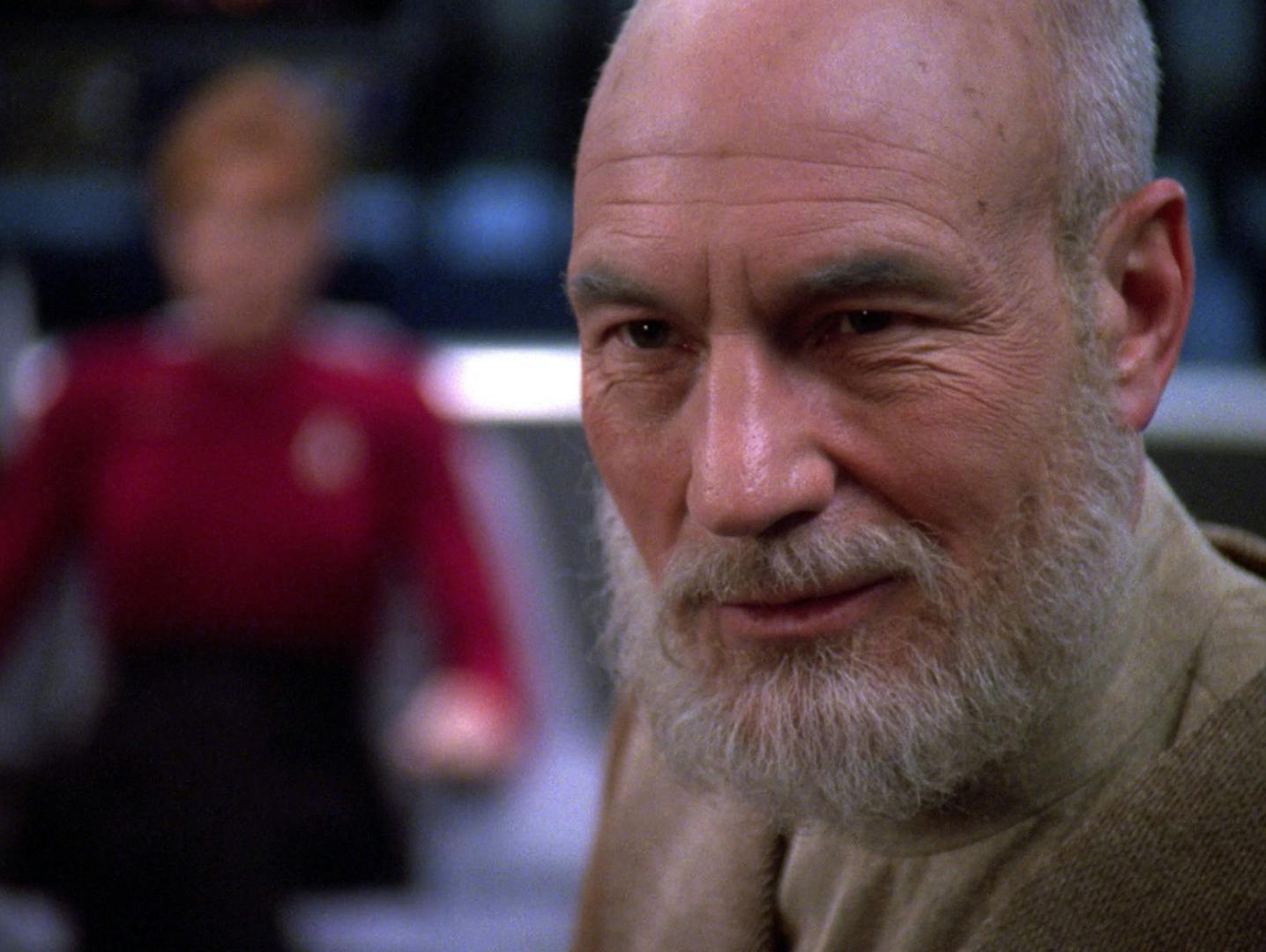
"All Good Things..."
Speaking of the best of The Next Generation , the immortal series finale is, from a certain point of view, one big time loop. As Jean-Luc Picard shifts between past, present, and future, the biggest mystery of "All Good Things…" is what caused the anomaly in the Devron system? Eventually, we learn that the ending and the beginning of this story are inextricably connected, a paradox that creates a kind of loop that must be broken.
Twenty-nine years later, in the Star Trek: Picard episode, " Imposters ," Captain Liam Shaw references this moment, and notes that Picard and Riker have a "real chicken and egg thing going on." It doesn’t get any more time-loopy than that!
" Visionary ," Star Trek: Deep Space Nine (Season 3, Episode 17)
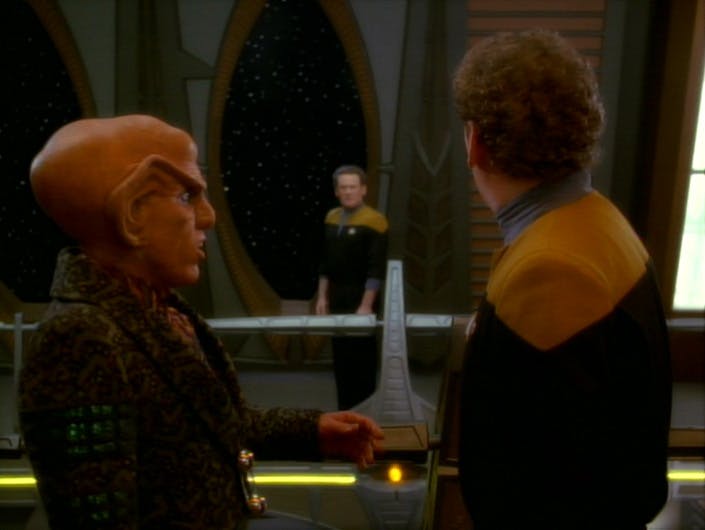
"Visionary"
When O'Brien starts seeing another version of himself appearing randomly throughout the station, Dr. Bashir briefly floats the idea that he's just having really boring hallucinations. But, as the episode goes on, it becomes clear that O'Brien is actually seeing brief moments in the future, and then, catching up to those moments in the present.
"Visionary" messes with what we expect from a time loop episode, because in all instances of future occurrences, there are literally two O'Briens present, and, when the past O'Brien catches up to the future moment, the duplication effect happens again, creating a kind of visual loop for the audience. The funny thing is, in several instances, the future doesn't play out exactly the way past O'Brien saw the first time, making this one of the wobblier time loops in all of Star Trek .
" Relativity ," Star Trek: Voyager (Season 5, Episode 24)
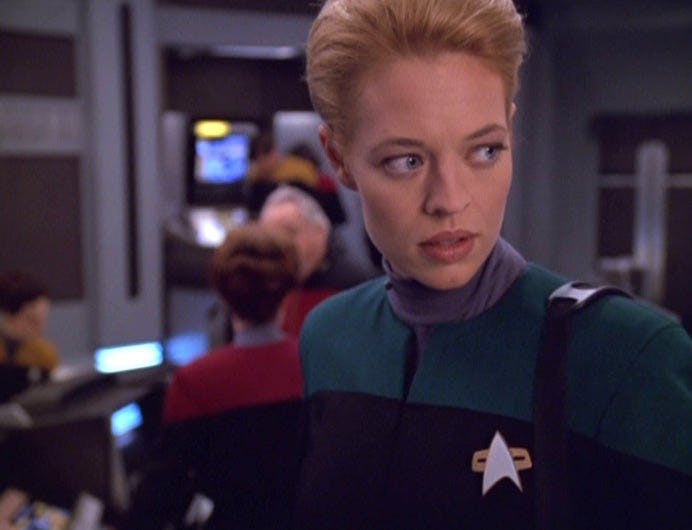
"Relativity"
In a move very similar to Discovery 's "Face the Strange," this unforgettable episode of Voyager briefly takes us back to a point before the series even begins, showing us Janeway's first moments on Voyager before the ship left the Utopia Planitia Shipyards on Mars. (In "Face the Strange," Burnham and Rayner see Discovery in a drydock on Earth well before the events of Season 1.)
But, Voyager 's jaunt into its own prehistory is just the beginning of a very specific type of time jumping episode. Here, Seven of Nine isn't exactly repeating a loop, but, making several attempts at different times, to prevent a bomb from destroying Voyager . As Tuvok aptly puts it when encountering one version of Seven from the future, "Like many time paradoxes, it's improbable, but not necessarily illogical." Because this episode features multiple versions of Seven, and leaps to various eras of Voyager , it pairs very nicely with Burnham and Rayner's similar jumps in "Face the Strange." Especially the moment where Seven meets herself.
" Shattered ," Star Trek: Voyager (Season 7, Episode 11)
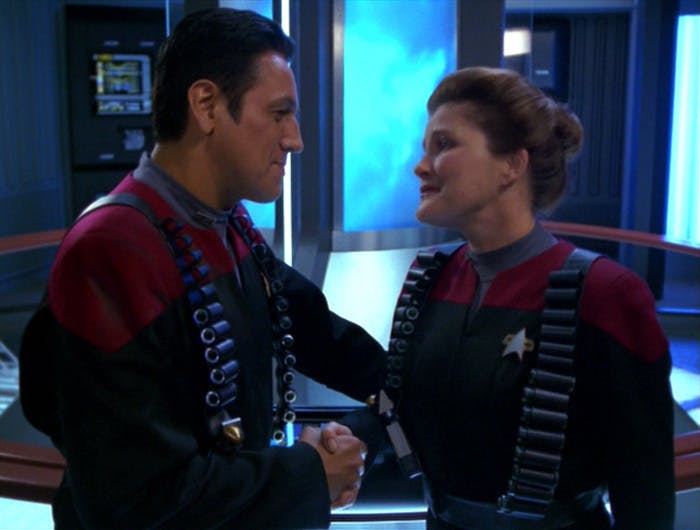
"Shattered"
Does Voyager have the best timey-wimey episodes in all of the Trek franchise? It's hard to say, but if there's another Trek episode that feels like an older sibling of Discovery 's "Face the Strange," it's almost certainly "Shattered," a fan-favorite episode from Voyager 's final season. Here, the captain and the first officer — Janeway and Chakotay — find themselves on a version of the ship that has been split into different time periods.
"Shattered" is one of Star Trek 's greatest retrospective episodes, touching on moments across all of Voyager 's story, and teaming past versions of characters with ones closer to the present. It's a touching story, and, structurally, it's wonderfully homaged in Discovery .
" Magic to Make the Sanest Man Go Mad ," Star Trek: Discovery (Season 1, Episode 7)
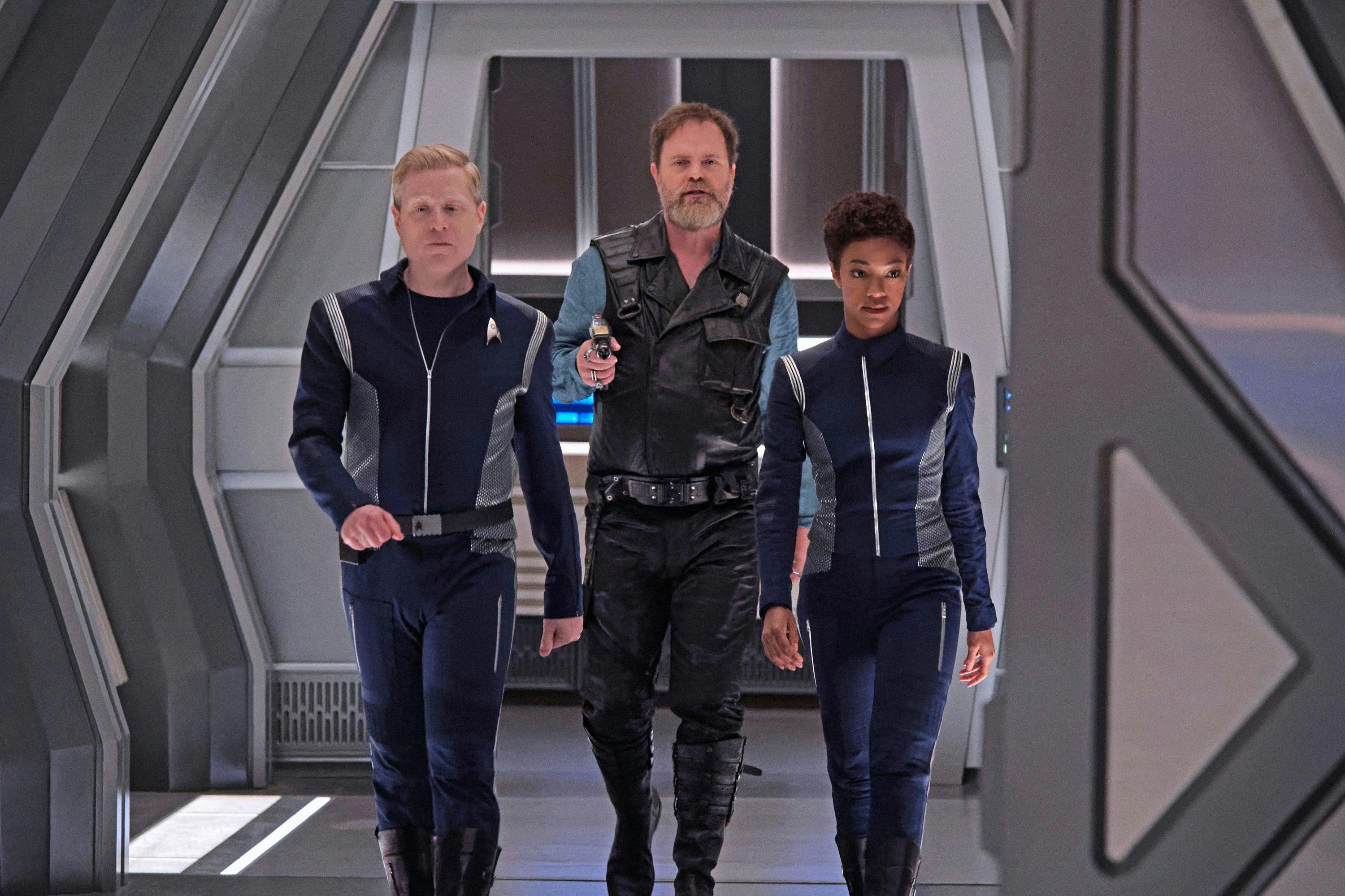
"Magic to Make the Sanest Man Go Mad"
One of Discovery 's stand-out moments from Season 1 fully set the stage for "Face the Strange" in Season 5. In "Magic to Make The Sanest Man Go Mad," Harry Mudd sets the ship on a true time loop, in which only Stamets can truly remember what is going on. Like in "Face the Strange," Stamets has a perception that exists outside of time, thanks to taking on the Tardigrade DNA in "Choose Your Pain."
This detail comes in handy in "Face the Strange," where Burnham and Stamets again have to re-team to get Discovery out of a time loop caused by nefarious enemies using time travel technology as a weapon. In Season 1, Burnham and Stamets barely knew each other, much like Burnham and Rayner's relationship in Season 5. But, if there's one thing a time loop or time-jumping episode can do, it’s make people who are just colleagues into best friends for life.
Get Updates By Email
Ryan Britt is the author of the nonfiction books Phasers on Stun! How the Making and Remaking of Star Trek Changed the World (2022), The Spice Must Flow: The Journey of Dune from Cult Novels to Visionary Sci-Fi Movies (2023), and the essay collection Luke Skywalker Can’t Read (2015). He is a longtime contributor to Star Trek.com and his writing regularly appears with Inverse, Den of Geek!, Esquire and elsewhere. He lives in Portland, Maine with his family.
Star Trek: Discovery Seasons 1-4 are streaming exclusively on Paramount+ in the U.S., the UK, Canada, Switzerland, South Korea, Latin America, Germany, France, Italy, Australia and Austria. Seasons 2 and 3 also are available on the Pluto TV “Star Trek” channel in Switzerland, Germany and Austria. The series streams on Super Drama in Japan, TVNZ in New Zealand, and SkyShowtime in Spain, Portugal, Poland, The Nordics, The Netherlands, and Central and Eastern Europe and also airs on Cosmote TV in Greece. The series is distributed by Paramount Global Content Distribution.

Star Trek's Writers Didn't Invent The Borg Queen – A Paramount Executive Did
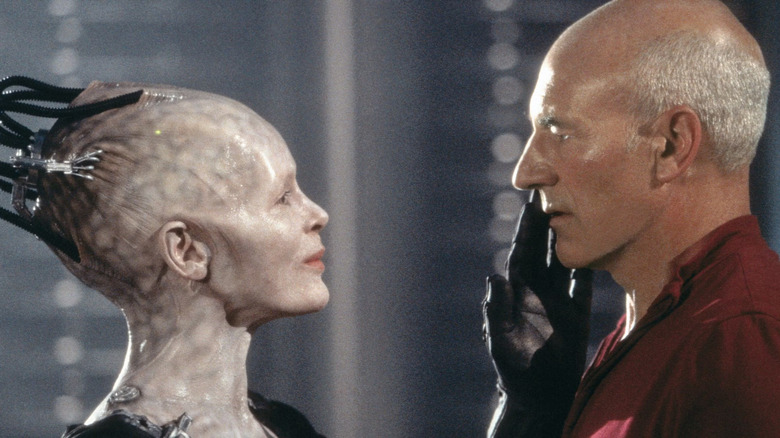
When the Borg were first introduced on "Star Trek: The Next Generation" (in the 1989 episode "Q Who"), they were terrifying. Clearly inspired by the works of H.R. Giger, the Borg sported tubes, servos, wires, and ineffable black machinery sprouting from their bodies. The Borg were made up of other species that had been kidnapped and assimilated into their collective, their minds wiped and replaced with a singular, terrifying machine consciousness. The Borg traversed space in outsized cube-shaped vessels, likewise crisscrossed with wires and ducts. They only had one goal: to grow. As Q (John de Lancie) described them, the Borg are the ultimate users. They look out at the universe and emotionlessly see nothing but raw materials to expand with.
The Borg returned periodically throughout "Next Generation," becoming one of the show's more impressive antagonists. The race of soulless machine people proved to be a great villain.
Naturally, when "Next Generation" moved into feature films, the Borg had to return. Jonathan Frakes' 1996 film "Star Trek: First Contact" featured the Borg traveling back in time to a vulnerable moment of Earth's history, hoping to alter events in their favor. In the past, the crew of the U.S.S. Enterprise discovered a new Borg wrinkle: they didn't have a group consciousness but were ruled by a sweaty, malevolent, emotional Queen (Alice Krige). Giving the Borg a "boss monster" was a silly twist that has, unfortunately, become a key part of "Star Trek" lore.
In the oral history book "The Fifty-Year Mission: The Next 25 Years: From The Next Generation to J. J. Abrams," edited by Mark A. Altman and Edward Gross, "First Contact" co-writer Brannon Braga revealed that the Borg Queen was invented by a Paramount executive named Jonathan Dolgen ... who thought the Borg were boring.
To elucidate: "Star Trek: First Contact" is about a Borg attack on Earth that is cut short by the tactical savvy of Starfleet and the Enterprise-E. Just before their ship is destroyed, the Borg send a small spherical vessel through a mysterious time portal. The Enterprise pursues, getting caught briefly in a "time wake" and for a moment see that history has been altered. The Earth's population is now nine billion Borgs. The Enterprise goes back to the year 2063 to prevent their timeline alteration.
Audiences finally meet the Borg Queen a third of the way into the film. Unlike the other Borgs, the Queen is individualistic, sexual, and emotional and claims to speak for the Borg. Uncharacteristically, she states very specific goals. She was a fun, slinky, terrifying movie monster, but she made the Borg less threatening; the previously single-minded cyborgs now had a leader one could negotiate with.
Which is how Dolgen wanted it. The exec said that the Borg were dull, amounting to little more than robot zombies. They needed a voice. Screenwriter Brannon Braga hastened to come up with a "fix." Braga recalled:
"We did a substantial rewrite. Also, it was Jonathan Dolgen at the time who ran Paramount, the biggest cheese there was, and he was also a ravenous 'Star Trek' fan. Rick and I used to go into his office for meetings all the time, and he would say, 'Oh, I really like this episode and that episode.' I think he was the one who said the Borg are boring. They're just zombies, you need a voice. We thought, 'S***, okay, it's like a hive. Like a bee colony. Let's make a queen,' and it was probably the best invention we could have possibly come up with."
A hive? Sure.
Assimilate this
Turning the Borg into a hive made the villains a lot less interesting. Instead of being an unreasonable machine intelligence, there was now a hierarchy on board a Borg ship, with a "captain" calling the shots and the "drones" taking orders. And if the Queen was sexual and emotional, she was suddenly prone to trickery and manipulation herself. Indeed, in the climax of "First Contact," Data (Brent Spiner) hoodwinks the Borg Queen; she is emotionally distracted enough to let Data (Brent Spiner) re-aim the ship's torpedos.
But Braga was just following orders from Paramount, and a Borg Queen was his most elegant solution. At least the change was demanded by a Trekkie with his own vision of the franchise, and not an ignorant moneyman looking for toyetic images.
Early in the scriptwriting process, it seemed that Commander Riker (Jonathan Frakes) was to be the hero. Braga realized that Picard should be the one to face off against the Borg again, saying:
"I don't think anyone realized by shuffling Picard and Riker around it would change things so monumentally, but I'm glad it did. Because it was the next movie, and it had been two years since you had last seen Picard, you kind of wanted to do big things with him. You wanted to have him fall in love and take a woman with him at the end. Actually, it was a good instinct on Patrick's part, because you want to see these characters in new situations. But this is an action movie. A romance? What a stupid idea. In the rewrite, the Borg meets the captain and he's our action hero."
"First Contact," despite its action film trappings , was a big hit, and is often considered the best of the "NextGen" movies. A Hive it is.
How Do Star Trek Stardates Actually Work?
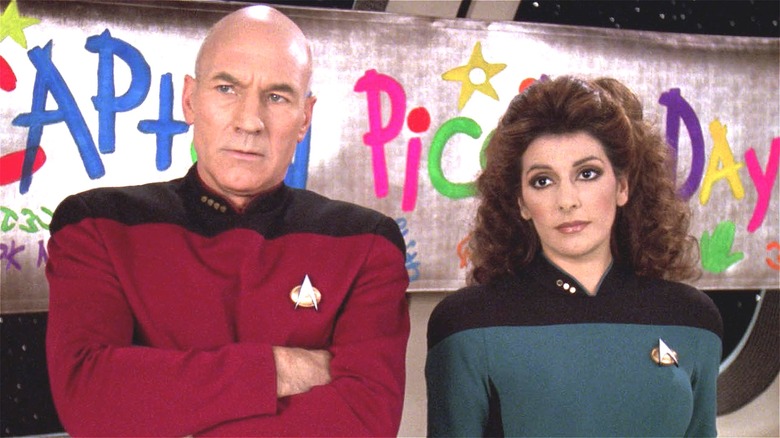
There are few handier delivery mechanisms for "Star Trek" exposition than a Captain's log entry, crucial Starfleet records that mark time with "stardates" — an enigmatic calendar system integrating decimals into each date. Although based on a real-world astronomical dating system, the Starfleet version doesn't make a ton of sense because it was never meant to, which is why the "Star Trek" timeline can seem confusing the deeper you dig into it.
As outlined in a 1967 "Star Trek" writer and director's guide, "The progression of stardates in your script should remain constant but don't worry about whether or not there is a progression from other scripts." Still, understanding the Julian date system can be a good starting point for those who care to try.
Speaking with The Space Review in 2019, "Star Trek: The Original Series" technical advisor Kellam de Forest explained that the futuristic calendar system was inspired by the Julian day — the solar day measurement used in the 365-day Julian solar dating system that predated the Gregorian calendar. Because the Julian day system creates a continued count of dates from the beginning of the Julian period, the ease of calculation between two dates without breaks has made it the preferred calendar for many scientific applications, including astronomical software. Julian dates are calculated by adding the Julian day — that is, the solar day since the beginning of the Julian calendar — and then adding a decimal point to indicate the fraction of the day that has passed since noon in Universal Time Code (UTC). Although the Julian date calculates days running into the millions, only the final five digits are commonly used by astronomers — and just four are used in "Star Trek."
Star Trek's stardates are intentionally difficult to calculate
According to the "Star Trek" writer's guide, the Starfleet calendar system was invented to deemphasize the in-universe date. As the guide puts it, "We invented 'Stardate' to avoid continually mentioning Star Trek's century (actually, about two hundred years from now), and getting into arguments about whether this or that would have developed by then."
Speaking on the 1988 documentary "Inside Star Trek: The Real Story," de Forest emphasized that this almost wasn't the case since the original script contained dates from the Gregorian calendar. Upon reviewing the script, de Forest felt this didn't feel right for the future spacefaring society. As a solution, he pitched the Julian-inspired concept, which the tech advisor felt had a futuristic vibe thanks to its use of decimals.
While "Star Trek" creator Gene Roddenberry liked the concept as a jumping-off point, his version was always meant to be a little esoteric, as Samuel A. Peeples, who wrote the second pilot for "Star Trek: The Original Series," recounted in "Gene Roddenberry: The Myth and Man Behind Star Trek." According to Peeples, "We tried to set up a system that would be unidentifiable unless you knew how we did it." Conceptualizing the revised stardate system over drinks, Roddenberry and Peeples took into account the weirdness of space and relative time, ultimately concluding that any date-related continuity errors in "Star Trek" could be chalked up to these issues. Or as the "Star Trek" writer's guide put it, "Stardates are a mathematical formula which varies depending on location in the galaxy, velocity of travel, and other factors, can vary widely from episode to episode." In other words, don't think too hard about it.
Den of Geek
Discovery Season 5 Episode 5 Easter Eggs Reveal the Fate of a Classic Star Trek Ship
From the Mirror Universe and the ISS Enterprise to a big reveal about the Breen, Discovery season 5 just referenced a a huge swath of the Star Trek timeline.

- Share on Facebook (opens in a new tab)
- Share on Twitter (opens in a new tab)
- Share on Linkedin (opens in a new tab)
- Share on email (opens in a new tab)
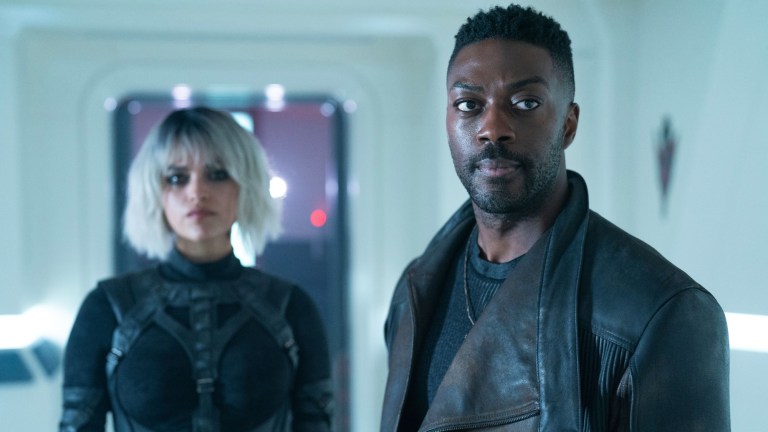
This Star Trek: Discovery article contains spoilers.
As both a prequel and sequel to various versions of the Star Trek franchise, Star Trek: Discovery often includes unexpected easter eggs and references to the entire saga. The latest episode, “Mirrors,” is no exception, as it brings back a famous Star Trek ship, as well as answers questions about a mysterious alien species, which has been around since the 1990s.
From references to the goatee version of Spock, to some deep-cuts from Deep Space Nine , and even a tribble joke, Discovery ’s easter eggs in season 5, episode 5 aren’t messing around. Here are the best references and how these shout-outs solve a few mysteries, while suggesting a possible future development for the next Star Trek show.
“Classic Work on Kellerun”
Early in the episode, Rayner and Burnham talk about which stories are considered classics on the planet Kellerun. Rayner is a member of the Kellerun species, which were established in the DS9 episode “Armageddon Game.” We actually know very little about the Kellerun species, so Discovery is inventing new canon here, rather than referencing anything from previous Trek shows.
Ad – content continues below
Wormhole and the Burn
The wormhole that Book and Burnham have to enter is unstable, which describes most wormholes featured in Star Trek . But, in this case, it’s suggested that the matter/anti-matter reactions in this wormhole were caused by the Burn.
The Burn was that galaxy-changing event in the backstory of Discovery season 3, when, in 3069, every warp core in the galaxy detonated. Warp cores use matter/antimatter reactions to do their thing.
ISS Enterprise
Inside the wormhole, Book and Burnham encounter the ISS Enterprise , and Book says right away “ISS, that’s Mirror Universe.” When he says this we hear the Mirror Universe music from Discovery season 1.
The existence of the ISS Enterprise in this episode is a massive easter egg, which contains various other smaller easter eggs. These include the following:
- The ISS Enterprise was last seen, in-canon, in the TOS episode “Mirror, Mirror.” So, chronologically, in both our world, and the Trek timeline, this is its second appearance.
- The bridge and sickbay of the ISS Enterprise are just the sets from the Strange New Worlds version of the Enterprise . Discovery season 5 filmed in between SNW seasons.
- Several versions of the Terran Empire logo are seen throughout the ship. These match with the Terran Empire logo from Discovery season 1 and season 3, and differ from the logo from The Original Series .
- Does the redesign make sense in terms of the timeline? Well, Akiva Goldsman has suggested that on some level, the visual canon of Strange New Worlds relative to The Original Series isn’t the true canon. In 2023, he said that the aesthetic choices of the more modern Strange New Worlds don’t change the story as seen on TOS , but it doesn’t mean modern Star Trek will ever reveal a rubber-suited Gorn. “You will never see the Gorn like that…This is the Gorn as we perceive them,” Goldsman said. So, analogously, Discovery didn’t need to make the TOS Mirror Enterprise like the retro 1960s version. Plus, who knows what the Terran Empire did in between “Mirror, Mirror” and the moment this crew escaped?
Mirror Spock
Burnham mentions that the science station on the Enterprise was “my brother’s station.” This, of course, refers to Spock, who, in this universe, did, briefly, work at this exact station. Burnham says, “I’m sure he was just as ruthless as the rest though,” which, as we know, is not true. Mirror Spock spared Prime Kirk in “Mirror, Mirror,” and then became the leader of the entire empire.
In fact, when Book reads the story of this version of the Enterprise , he says, “The Terran High Chancellor was killed for trying to make reforms.” In the Deep Space Nine episode “Crossover,” we learned that the leader of the Terran Empire was Spock. And that Spock trying to reform the Terran Empire led to Earth being taken over in the 24th Century by the Klingon-Cardassian Alliance.
So, the episode references Spock, twice, without actually naming him, and the second time, neither Book nor Burnham even knows that Mirror Spock was a low-key hero.
Get the best of Den of Geek delivered right to your inbox!
Saru and the Mirror Universe From Discovery Season 3
Book mentions that the crew of the ISS Enterprise escaped with the help of a “Kelpien slave turned rebel leader.” This seems to reference the events of “Terra Firma Part 2,” from Discovery season 3. In that episode, Georgiou went back into the Mirror Universe and created a kind of pocket timeline in which she died at a different time, and Saru was freed to become a rebel leader. At the time, it wasn’t clear if this changed the timeline of the Mirror Universe — or the timeline of Discovery season 1 — but the mention of a Mirror Saru who is a rebel suggests that some version of that timeline might have occurred after all.
The Breen Revealed!
First mentioned in The Next Generation , the Breen eventually appeared in person in the 1995 Deep Space Nine episode “Indiscretion.” But, from that point, until now, they’ve only appeared inside their suits, and under those helmets. There’s been a ton of speculation for decades about what the Breen look like under their helmets, and now, we’ve finally seen the answer.
In “Mirrors” — during the flashbacks that explains Moll and L’ak’s relationship — we finally see that the Breen have not one face, but two . Apparently, one face exists under their helmet, while another, more stable face can emerge when they have their helmets off. This seems to suggest that the Breen hiding their faces has more to do with a cultural tradition than any environmental requirement. Moll has been running around without a helmet this entire season, and apparently, that’s what a Breen can look like, too.
Smuggling Tribbles
In one of the flashbacks, Moll jokes about making sure she “didn’t smuggle any tribbles on board.” This seems to suggest that yes, even in the 32nd Century , tribbles are still possibly hazardous, because they breed so quickly, and overrun spaceships and space stations. Famously, the tribbles first appeared in the TOS classic, “The Trouble With Tribbles.” Though, in Picard season 3, we did see a genetically engineered “attack tribble” with vicious teeth, stored away in a Section 31 black ops lab. It’s possible this “attack tribble” was created during the Dominion War, which means, it might have been designed to fight the Breen, who were Dominion allies back then.
As Book is navigating the ISS Enterprise out of the wormhole, he says, “Should we hit it?” Book has no idea that “hit it” was Pike’s catchphrase to send a ship into warp. Burnham smiles sheepishly and responds, “Feels weird. Let’s just fly.” She feels weird because she doesn’t want to steal Pike’s catchphrase, and so she uses her own catchphrase, “let’s fly,” instead.
The ISS Enterprise in the Prime Universe
The episode ends with the ISS Enterprise being fully intact in the Prime Universe. We’re told that Detmer and Owo are flying the ship back to Federation HQ on their own. Scotty was able to fly the classic Enterprise with just himself and Sulu in The Search for Spock , so we have to assume that Detmer and Owo have done something similar. We don’t know if a new, 32nd Century Enterprise exists in this era of Star Trek , but as of now, Discovery just brought a classic version of the ship into the future.
Because the upcoming Starfleet Academy series is set in the 32nd Century, it feels possible that Discovery just created a way for the students of future Starfleet to hang out on the bridge of the classic Enterprise — again!

Ryan Britt is a longtime contributor to Den of Geek! He is also the author of three non-fiction books: the Star Trek pop history book PHASERS…

Picard Never Appeared In Star Treks Mirror Universe But His Doppelganger Was Just As Evil
- General Picard's reign of terror in the Confederate Earth was just as brutal as the Mirror Universe's Terran Empire.
- Star Trek: The Next Generation never visited the Mirror Universe due to a cooler, scientific approach by the producers.
- Fans had to wait until Star Trek: Picard to meet General Picard's evil alternate, as TNG rejected the idea.
Audiences never met the Mirror Universe version of Captain Jean-Luc Picard (Patrick Stewart), but Star Trek: Picard revealed that he had an evil doppelgänger who was just as evil as anyone in the Terran Empire. In Picard season 2, the machinations of Q (John de Lancie) created an alternate timeline in which the United Federation of Planets becomes the Confederation of Earth. This brutal regime was the antithesis of Star Trek's Federation, drawing comparisons between the Confederation and the Terran Empire .
Both the Confederation and the Terran Empire placed humanity above all other species in the galaxy, leading to a bloody and brutal subjugation of other alien races. As Star Trek: TNG didn't visit the Mirror Universe , General Picard was the closest that fans got to seeing his evil counterpart. Just like the Mirror Universe version of Captain James T. Kirk (William Shatner), the Confederation's General Picard was a cruel despot who had conquered countless worlds and killed scores of enemies .
Worf Ruled The Mirror Universe In Star Trek: Deep Space Nine (No, Really)
General picard of confederation of earth was as evil as mirror universe.
Of the many reveals about Star Trek: Picard 's Confederation , the information about General Picard and his reign of terror was the most chilling. General Picard annihilated the Klingon home world Qo'noS, much like the Mirror Universe's Emperor Philippa Georgiou (Michelle Yeoh) did in Star Trek: Discovery . Rather than command the USS Enterprise-D, Picard was in command of the CSS World Razer, a fearsome looking starship of which an oil painting was hung in the General's study . General Picard's study was also decorated with the skulls of some notable Star Trek figures, including:
- Borg Sentinel One of Two
- Grand Nagus Zek (Wallace Shawn)
- Gul Dukat (Marc Alaimo)
- General Martok (J.G. Hertzler)
- Director Sarek (Mark Lenard)
Like his Prime Universe counterpart, General Picard also had a synthetic body, which he had acquired following a battle with Gul Dukat . The General's chateau was staffed by both Romulan and synthetic slaves, who maintained his home while he was on important business for the Confederation Corps. When Prime Picard arrives in the Confederation reality in Star Trek: Picard season 2, it's on the eve of Eradication Day, in which the General is scheduled to publicly execute the Borg Queen (Annie Wersching). The Borg Queen's skull would have joined the others in Picard's trophy room if Jean-Luc and the La Ceritos crew hadn't saved her.
Why Star Trek: The Next Generation Never Went To The Mirror Universe
The notion of a Star Trek: The Next Generation episode set in the Mirror Universe existed from as early as 1987, when David Gerrold joked about a sequel to "Mirror, Mirror" in Starlog magazine which would have featured Edith Keeler (Joan Collins) and dangerous, carniverous Tribbles . Jerome Bixby, who wrote the original Mirror Universe episode of Star Trek: The Original Series pitched a sequel for TNG that would have featured older versions of the TOS characters . However, this idea was rejected by Paramount, who didn't want to feature them so heavily in TNG .
Of the many Mirror Universe episodes pitched to Star Trek: The Next Generation , hardly any of the failed pitches have become public knowledge.
A.J. Black's book Lost Federations: The Unofficial Unmade History of Star Trek suggests that the pulpy idea of a darkest timeline didn't sit well with " The Next Generation's cooler, scientific approach to Star Trek, particularly in the Piller era. " Black's assumption is largely correct, backed up by Michael Piller himself. Piller explained that he " wasn't interested " in revisiting the Mirror Universe during TNG , despite the multiple "Mirror, Mirror" sequels that were pitched to him . While Piller would eventually acquiesce and produce a "Mirror, Mirror" sequel on Star Trek: Deep Space Nine , fans would have to wait until Star Trek: Picard to meet Jean-Luc's evil alternate.
All episodes of Star Trek: Picard and Star Trek: The Next Generation are available to stream on Paramount+.
Star Trek: Picard
After starring in Star Trek: The Next Generation for seven seasons and various other Star Trek projects, Patrick Stewart is back as Jean-Luc Picard. Star Trek: Picard focuses on a retired Picard who is living on his family vineyard as he struggles to cope with the death of Data and the destruction of Romulus. But before too long, Picard is pulled back into the action. The series also brings back fan-favorite characters from the Star Trek franchise, such as Seven of Nine (Jeri Ryan), Geordi La Forge (LeVar Burton), Worf (Michael Dorn), and William Riker (Jonathan Frakes).
Star Trek: The Next Generation
Star Trek: The Next Generation is the third installment in the sci-fi franchise and follows the adventures of Captain Jean-Luc Picard and the crew members of the USS Enterprise. Set around one hundred years after the original series, Picard and his crew travel through the galaxy in largely self-contained episodes exploring the crew dynamics and their own political discourse. The series also had several overarching plots that would develop over the course of the isolated episodes, with four films released in tandem with the series to further some of these story elements.
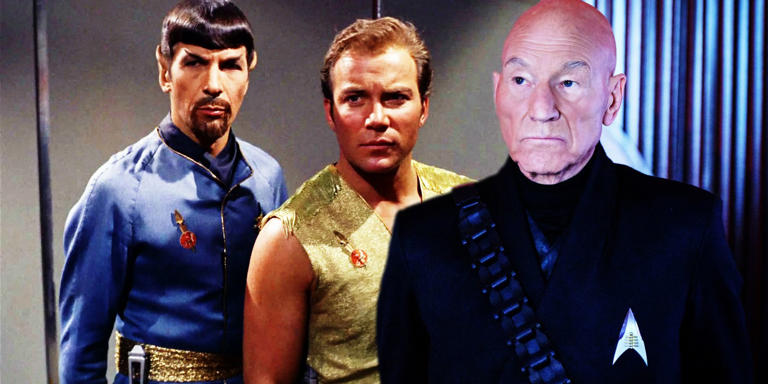
Screen Rant
Star trek's new "non-linear" threat confirms 1 weapon can damage the entire timeline.
Kahless' crusade against the gods in IDW's Star Trek comics has had dire effects on the universe, and now the entire timeline may be at risk too.
- Star Trek #19, by Jackson Lanzing, Collin Kelly and Megan Levens, shows the true, horrifying extent of the damage Kahless' crusade against the gods has caused.
- Kahless' rampage threatens not only the universe, but the entire timeline as well.
- Finally, Kahless' campaign could lead to the destruction of the multiverse too.
Kahless’ crusade against the galaxy’s god-like beings has been a key part of IDW’s revitalized line of Star Trek comics, and now the damage he has done could threaten the entire timeline. In Star Trek #19, T’Lir, the enigmatic Vulcan who is revealed to be Organian, reveals just how much damage Kahless has caused to existence. Thanks to Kahless, time itself could come unraveled.
Star Trek #19 is written by Jackson Lanzing and Collin Kelly and drawn by Megan Levens. In the Theseus’ Ready Room, T’Lir briefs Captain Sisko and the crew on what happened to their fellow Organians. They tell Sisko that Kahless’ weapon has “tore at the very fabric of space-time.” T’Lir then goes on to reveal that the damage Kahless did was “non-linear” and it killed the Organians over 20 years prior.
T’Lir uses this as part of their case to convince Sisko to travel to the Pleroma, the newly revealed dimension of the gods.
Star Trek's God War Threatens More Than Just the Gods
Now, the entire star trek timeline is at risk of being destroyed.
In late 2022, IDW gave their Star Trek comics a shot in the arm, creating an epic, multi-year, multi-title story. The seeds were planted in Star Trek #400, when a mysterious force killed Gary Mitchell. The Bajoran Prophets sent Benjamin Sisko back to stop whoever was behind the slaughter of god-like beings. It was revealed to be the cloned Klingon Emperor Kahless. Seeking to fulfill the promise of his namesake, who allegedly slaughtered the Klingon gods, Kahless embarks on a campaign of terror. Both the Crystalline Entities and the Organians fell to Kahless.
It was made clear from the get-go that Kahless’ actions had the potential to seriously destroy the fabric of the universe. Both T’Lir and Spock arrive at this conclusion. While they were believed by Sisko and Starfleet, the exact amount of damage Kahless was causing was unknown. The gods Kahless was fighting were crucial to the smooth functioning of the universe, and now Kahless has thrown that into disarray. Sisko, T’Lir and the Theseus must now travel to the Pleroma to set things right. Kahless is still on the loose, and the Pleroma could be his next target.
Star Trek's Writers Have Promised Even Bigger Things to Come
Could star trek get its own version of secret wars.
It is crucial that Sisko and company stop Kahless, because now it seems that the destruction he has wrought is spreading through the timeline. Kahless’ actions have rippled across the time stream, killing the Organians and others like them. Kahless’ actions not only threaten the prime Star Trek universe, but the entire multiverse as well. In a recent interview with ScreenRant , writers Lanzing and Kelly revealed “The Pleroma” storyline sets up even bigger things for the title. Kahless posing a threat to the entire Star Trek multiverse would be the perfect capstone for the series.
Star Trek #19 is on sale now from IDW Publishing!

COMMENTS
Bantam Books was the first licensed publisher of Star Trek tie-in fiction. Bantam published all their novels as mass market paperbacks. Bantam also published Star Trek Lives! (1975) by Jacqueline Lichtenberg.. Episode novelizations (1967-1994) Short story adaptations of The Original Series episodes written by James Blish and J. A. Lawrence. Mudd's Angels (1978) includes the novelizations of ...
The complete Lit-verse consists of a continuity web of more than 1100 stories. That is approaching half of all Star Trek fiction ever published. In addition to the majority of the novels which have been released over the past two decades, many older novels have been referenced in this continuity as well. Available to the left are reading lists ...
A side-step from regular TOS adventures gives us a linked series of books featuring the Star Trek universe of the 20th and 21st centuries. A good place to start exploring these is the Eugenics Wars duology. Other spin-offs; New Frontier was the first major spin-off Star Trek book series, featuring the adventures of Captain Calhoun and the USS ...
Tour Start here for a quick overview of the site Help Center Detailed answers to any questions you might have Meta Discuss the workings and policies of this site
The books were quite famous once the show gained popularity and Bantam Books republished Blish's books in three volumes one for each season. There was an acknowledgement stating that after Star Trek 7 or Star Trek 8 the credit for writing Star Trek novels goes to his wife and mother J. A. Lawrence who ghost wrote the books for him.
This article discusses the fictional timeline of the Star Trek franchise.The franchise is primarily set in the future, ranging from the mid-22nd century (Star Trek: Enterprise) to the late 24th century (Star Trek: Picard), with the third season of Star Trek: Discovery jumping forward to the 32nd century.However the franchise has also outlined a fictional future history of Earth prior to this ...
Star Trek post-Nemesis reading order The following is a recommendation of a reading order for the novels that are set in and/or interact with the post-Nemesis era of Star Trek. This includes the ongoing adventures in the Next Generation, Deep Space Nine, Voyager, and Enterprise lines, along with spin-off series Titan and adventures of the USS ...
The Star Trek novels were mostly written to accompany the various television series and movies, thereby enriching the mythos even more. The first Star Trek novels were direct novelizations of the original Star Trek episodes by James Blish, running from 1967-1978. Along with the various Star Trek novel series there have also been dozens of ...
Star Trek Novel Reading Order. Star Trek is one of the largest media tie-ins around, next to Star Wars novelizations. Although released in multiple series such as The Original Series, The Next Generation, Section 13, etc you can read these books as one large, interconnected story line. This is a reading order for all of the published Star Trek ...
Series list: Star Trek (903 Books). A sortable list in reading order and chronological order with publication date, genre, and rating.
The complete Star Trek timeline so far. The current main Star Trek timeline begins in the year 2151, with the first season of Enterprise, and concludes over a millennium later in 3190 with the upcoming Star Trek Discovery season 5. After Enterprise kicked things off in 2151, the TOS-era begins in 2259, with the TOS prequel Strange New Worlds.
The Star Trek Chronology: The History of the Future is a reference book detailing the history of the Star Trek universe, written and compiled by production staffers Mike and Denise Okuda, and officially endorsed and licensed by Paramount. Despite being written from an in-universe perspective, it also is annotated with some real-world commentaries by the authors. From the 2nd edition back cover ...
Novels. Mission to Horatius, the first Trek novel. For in-universe novels, please see Book. Through a licensing process similar to those granted to create collectibles, comics, and games, Paramount Pictures has granted the rights to market Star Trek stories and books of various sorts through a number of different publishers, beginning in 1967 ...
The novels of The Original Series have been published by many publication houses, but the one published by the Pocket Books or the Titan Books in U.K is very popular. The Star Trek: The Original Series was started in the year 1979 when the first novel of the series was published by the Pocket Books.
This is a fan-created site dedicated to providing a holistic view of the chronological timeline of events in the Star Trek universe(s). Most material is sourced from the Memory Alpha fandom wiki site. TrekTimeline.com is not endorsed, sponsored, or affiliated with CBS Studios Inc. or the "Star Trek" franchise. The Star Trek trademarks, logos ...
[ Turn Graphics On ] [ Novels Page ] GUIDE TO THE EARLY STAR TREK NOVELS The classic STAR TREK novels were only seventeen in number, but a wealth of past history was revealed in those few adventures. Listed below are all the references to specific dates mentioned in the classic STAR TREK novels. Also included are a few key historical points that are related to the other events, such as the ...
The STAR TREK Annotated Timeline began in the late 1970s as an effort to place the original Star Trek novels published by Bantam Books, and the Star Trek Log books by Alan Dean Foster, into a logical chronology with the televised episodes of the original series. Bjo Trimble's Star Trek Concordance was heavily used as a reference in back in those days, in which this Timeline was a hand-written ...
The "Star Trek" timeline is a long and complicated, but it all starts with "The Original Series." ... Countless comic books and novels have been published that recount other adventures of Captain ...
39 books based on 3 votes: The Edge by Rudy Josephs, Star Trek Into Darkness by Alan Dean Foster, Star Trek (Star Trek: Kelvin Movie Novelization #1 by A...
The Star Trek: Voyager is a science fiction book that was done by Gene Roddenberry in 1995. Gene Roddenberry was born on 19th August 1921 in El Paso, Texas, United States and passed away on 24th October 1991 in Santa Monica, California United States when he 70 years of age. He got married to Eileen Anita Rexroat on 20th June 1942.
Where to Watch: Paramount+ 20. Star Trek: Prodigy (2383-TBD) Star Trek: Prodigy was the first fully 3D animated Star Trek series ever and told a story that began five years after the U.S.S ...
The chronology of the Star Trek Relaunch novels covers the period of the late 2370s and 2380s after the final on-screen outings of the series set in the 24th century: The Next Generation, Deep Space Nine, and Voyager. It was designed to bring all of the Star Trek universe into a single continuity, with characters and story arcs making multiple crossovers between series. It also encorporates ...
Pocket Books published a timeline of their books in Adventures in Time and Space. It was revised and added to Gateways: What Lay Beyond and again in Voyages of Imagination, aka "The Star Trek Fiction Companion". This most current version contains a complete timeline to the "Pocket Books Star Trek novels, short stories, eBooks, novelizations, Simon & Schuster Audio original audio books ...
In the Star Trek: Discovery Season 5 episode, "Face the Strange," Captain Burnham and Commander Rayner find themselves both stuck in a loop, but also, jumping all around the timeline of the titular starship.From the point before the U.S.S. Discovery was launched, to pivotal moments in Season 4, Season 3, Season 2 and even very early in Season 1, Rayner notes at one point that, "We've gone ...
In the oral history book "The Fifty-Year Mission: The Next 25 Years: From The Next Generation to J. J. Abrams," edited by Mark A. Altman and Edward Gross, "First Contact" co-writer Brannon Braga ...
As outlined in a 1967 "Star Trek" writer and director's guide, "The progression of stardates in your script should remain constant but don't worry about whether or not there is a progression from ...
From the Mirror Universe and the ISS Enterprise to a big reveal about the Breen, Discovery season 5 just referenced a a huge swath of the Star Trek timeline. Share on Facebook (opens in a new tab ...
A.J. Black's book Lost Federations: The Unofficial Unmade History of Star Trek suggests that the pulpy idea of a darkest timeline didn't sit well with "The Next Generation's cooler, scientific ...
Kahless' crusade against the galaxy's god-like beings has been a key part of IDW's revitalized line of Star Trek comics, and now the damage he has done could threaten the entire timeline. In Star Trek #19, T'Lir, the enigmatic Vulcan who is revealed to be Organian, reveals just how much damage Kahless has caused to existence. Thanks to Kahless, time itself could come unraveled.
The movie is said to be set decades before 2009's Star Trek movie, which created the splinter timeline. in which the sequels Star Trek Into Darkness and Star Trek Beyond also take place. This ...